











risk. Having a strong social support network has been linked to better psychological health.
Venting to people in that network is one way to reduce the impact of daily stressors, said Millstein, also an assistant professor in the department of psychiatry at Harvard Medical School. "Calling a friend and letting it out can be helpful. It helps us feel connected to our social support networks, which is a big determinant of life satisfaction and overall well-being."
Speaking to someone who is supportive of your feelings can be helpful, even if that person offers a different perspective, she said.
Shaffer said.
If speaking feelings aloud to someone else feels unsafe, another alternative is to write them down, Shaffer said.
Studies have found numerous health benefits to expressive writing, the practice of writing down feelings on a daily basis. It has been shown to aid in healing from traumatic experiences and to help lower blood pressure, boost the immune system, improve sleep and lessen depression and pain.
Venting — the release of negative, pent-up emotions — can feel good. But is it actually good for you? Or does it do more harm than good to dwell on negative thoughts and feelings?
Experts say that depends on a number of factors, including who's on the receiving end of a venting session, how often a person does it and what type of feedback they receive.
"By and large, we do need to get our negative emotions out," said Rachel Millstein, a staff psychologist in the behavioral medicine program and the lifestyle medicine clinic at

Massachusetts General Hospital in Boston. "The ways we do it, though, that's where it's healthy or unhealthy, productive or unproductive."
Personal relationships, work, finances and discrimination are just some of the daily stressors that may fuel someone's need to vent. Research shows this kind of stress can raise the risk for cardiovascular disease, whereas releasing or managing stress can improve physical and psychological health, lowering that
But venting to someone who is dismissive of your feelings can be detrimental, said Jonathan Shaffer, an associate professor of clinical health psychology at the University of Colorado in Denver. "It's invalidating to share and get no response from the other person. It might make you feel like you don't have worth or are not loveable."
Venting also can be counter-productive if the listener amplifies negative feelings and "the conversation spirals. Then you can pull each other down," Millstein said.
Another negative consequence could be if the listener gets tired of listening. "If you vent over and over again, this person might not want to be present, and this can fray a social connection," she said.
For major stressors, it might be more helpful to speak to a therapist,
Whether releasing feelings on paper or in person, Shaffer suggests finding ways to focus on the positive, as well as the negative. For example, ending a venting session with a focus on things for which the person is grateful can help restore positive feelings, he said, as can mindfulness practices.
"Make a plan for some type of relaxation, such as deep breathing or meditation afterwards," he suggested.
Exercise also can relieve stress and release negative feelings, Millstein said.
"And don't forget that humor is a really good coping strategy, too," she said. Venting to a friend with a good sense of humor may be twice as helpful, because "sometimes other people can help us see the funny side of things."
It’s about more than just weight loss. It’s about reducing your risk for serious conditions like heart disease and diabetes — and regaining the stamina, mobility and confidence to take on every day.
Crouse’s bariatric surgery program offers a dedicated team of physicians and providers, as well as psychological and nutritional counseling — all with the expertise to support you every step of the way.
Begin the process from home by viewing our online informational video. Then consult with our bariatric team via telemedicine visits to start your journey. It’s time — and now easier than ever.
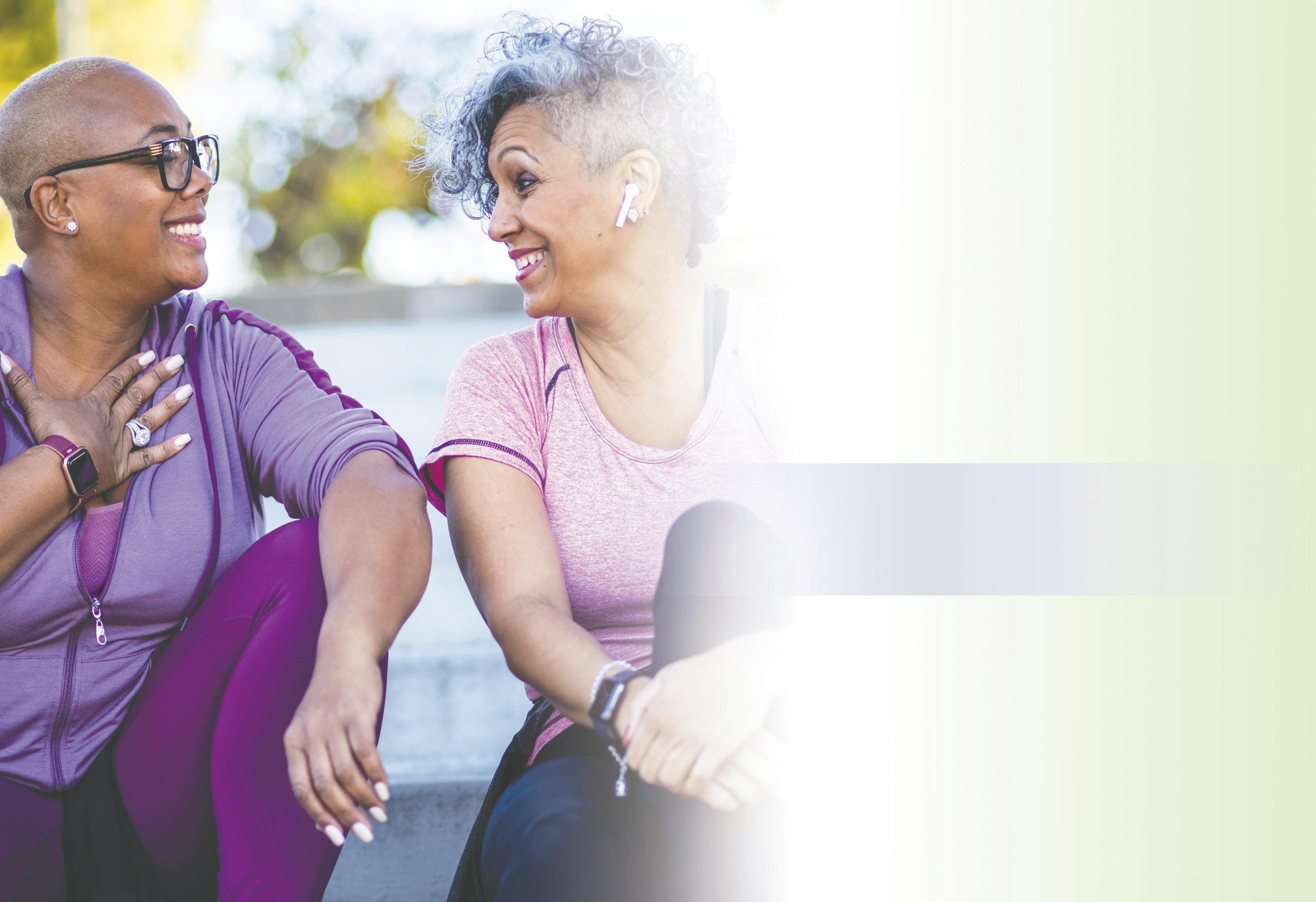



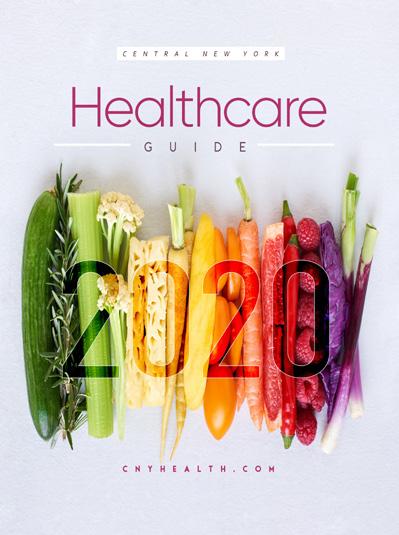
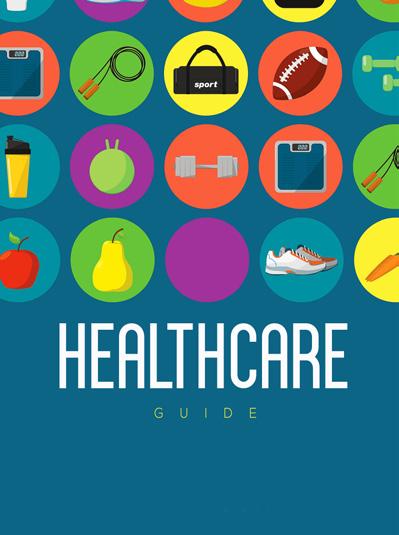
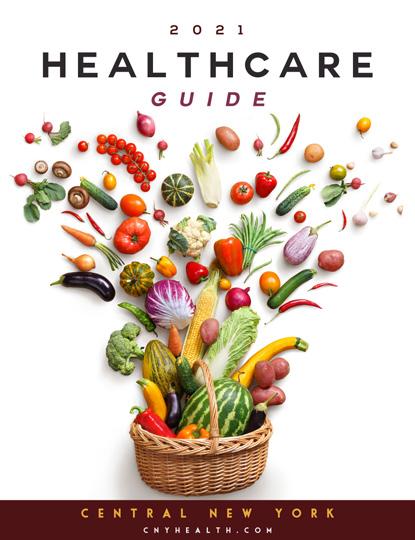

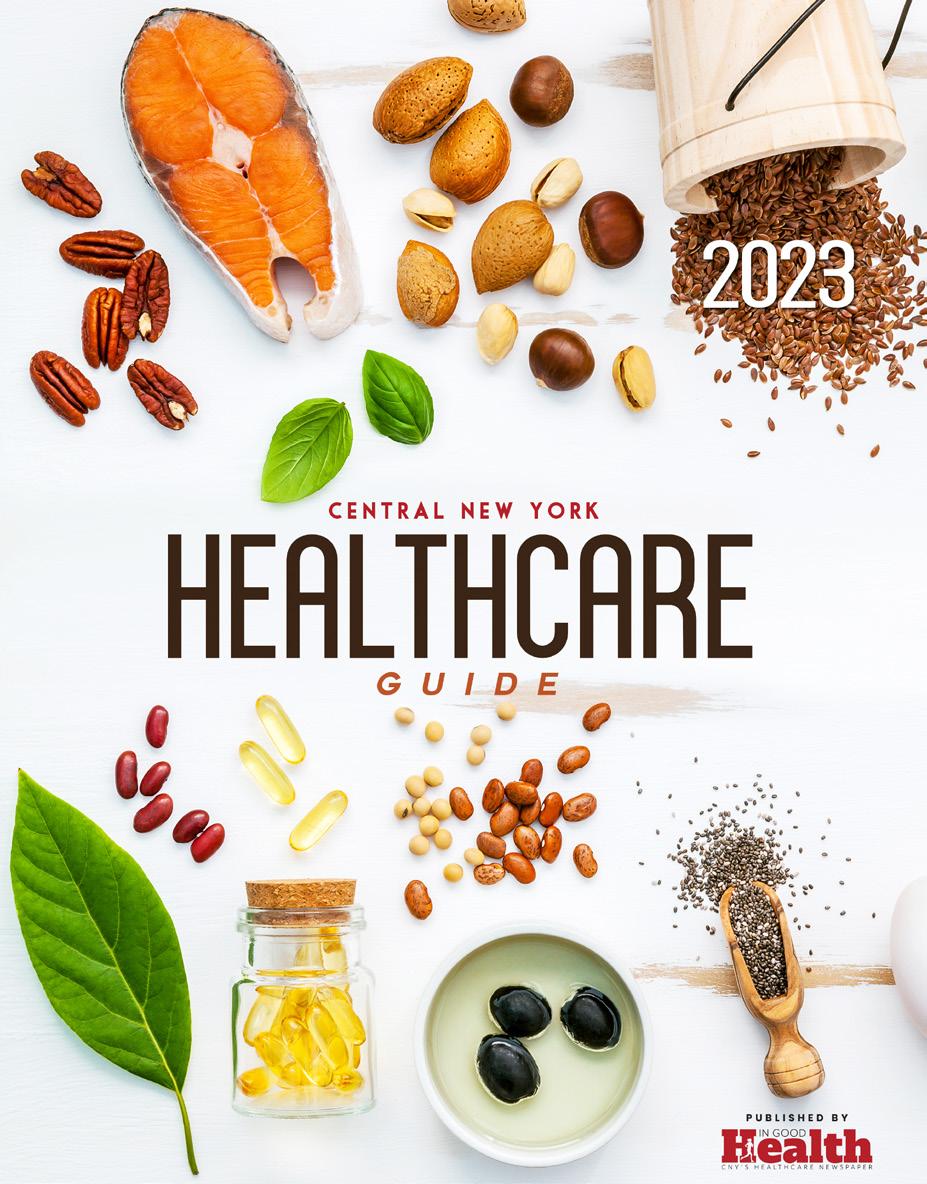
What started off in 2014 as a “think tank” project for a new downtown Utica hospital, Mohawk Valley Health Services is ready to open its new hospital— nine years after its conception.

The official opening day is scheduled for Oct. 29.
The hospital is named The Wynn Hospital after Steve Wynn, who donated $50 million to the project from his family foundation. Wynn is a Utica native who made a fortune in the real estate business and the art business, as well as his involvement in the luxury hotel and casino industry.
MVHS had to deal with and work through pushback from many people, businesses and politicians who did not agree with the location of the new hospital but rather wanted the location to be on the existing site of the St. Luke’s hospital campus. Organizations such as No Hospital Downtown vehemently opposed the downtown site location as well.
All said and done one of the biggest urban renewal projects in Utica’s history is now a reality.
Caitlin McCann, VP of marketing and communications at MVHS, said the hospital is ready to transition its patients and bring top of the line world class medical services to the community and beyond.
“Our patients will be moved on
Oct. 29, the same date as the current two hospitals, St. Luke’s and St. Elizabeth will close,” she said.
The moving of patients is a monumental task and of course the safety of all patients is paramount. To undertake this critical transition MVHS will be utilizing a leader in patient transition.
“To accomplish this move MVHS is working with Health Care Relocations which provides specialized relocation services to the health care industry worldwide. HCR has extensive experience having moved more than 500 hospitals,” McCann said.
HCR has been onsite at the current hospitals evaluating all items and equipment that needs to be moved to the Wynn hospital, she added.
One of the many questions from the community and public figures was what medical services will the Wynn Hospital offer that the current hospitals do not.
According to MVHS there will be many new services as well as improvements of existing medical services.
McCann listed a number of them:
• Strengthen and grow current full service cardiac offerings above becoming the first in the state to be designated a heart care center by the American College of Cardiology.
• Development of a neuroscienc-
es institute that will include a neurovascular center and comprehensive stroke center.
• A center for surgical innovation, expanding general and robotic services as well as an orthopedic institute which will expand on our current proven renowned outcomes.
• World class diagnostic center, including interventional radiology and advanced endoscopy.
• Becoming a level three trauma center with the ability to serve 90,000 emergency visits per year.
• The development of a new women’s and children’s center to meet the unique needs of these populations.
Overall the technology in the Wynn Hospital will be state-of-theart and the physical layout of the building provides a much more efficient way for staff to deliver care.

Another important challenge for MVHS will be to figure out what to do with the two closed hospitals.
Many communities who have hospital settings as well as educational settings in close proximity of one another combine the two to create a strong economic impact within their communities while providing critical services.
Recently, Utica College — whose campus is directly across the street (Champlain Avenue) from St. Luke’s hospital — received “university”
status. There might be a look into how the university might be able to use the St. Luke’s campus once the hospital is vacant. One use could be a specialized teaching hospital.
In the meantime, MVHS along with Oneida County Executive Director Anthony J. Picente with other interested partners are seeking proposal for the repurposing of St Luke’s, and along with the city of Utica, Utica IDA, MVHS and EDGE to redevelop MVHS’ St. Elizabeth’s campus.
The hospital will no doubt have a profound impact on Utica’s downtown corridor.
McCann said 3,000 to 3,500 employees will work in the medical field downtown when completed, with an average of 2,000 employees working per day.
Many once-vacant buildings near the new hospital have been rehabilitated into loft apartments, new restaurants have been popping up as well throughout the downtown area, road improvements are also underway near and around the new hospital.
Additionally, directly across from the hospital will be a new medical office building-ambulatory surgery center.
All patients from St. Luke’s and St. Elizabeth hospitals will be moved on Oct. 29, the same date as the two hospitals close
Alarge new study challenges the long-held idea that depression makes people more vulnerable to cancer, finding no association between the mental health condition and most types of cancer.
The study, of more than 300,000 adults, found that neither depression nor chronic anxiety were linked to increased odds of developing cancer in the coming years. And when researchers looked at specific types of cancer, the findings were largely the same.
The one exception was a slightly increased risk of cancers that are strongly linked to smoking, including lung cancer. And the analysis suggests that smoking — as well as alcohol and heavy body weight — are the real culprits, rather than depression or anxiety themselves.
Experts said the study, published online Aug. 7 in the journal Cancer, may offer reassurance to people who've blamed a cancer diagnosis on their mental health struggles.
"Our findings show that there is no evidence for this," said study leader Lonneke van Tuijl, a health psychology researcher at University Medical Center Groningen in the Netherlands.
Unfortunately, that kind of self-blame "comes up a lot," said physician William Breitbart, chief of psychiatry at Memorial Sloan Kettering Cancer Center in New York City.
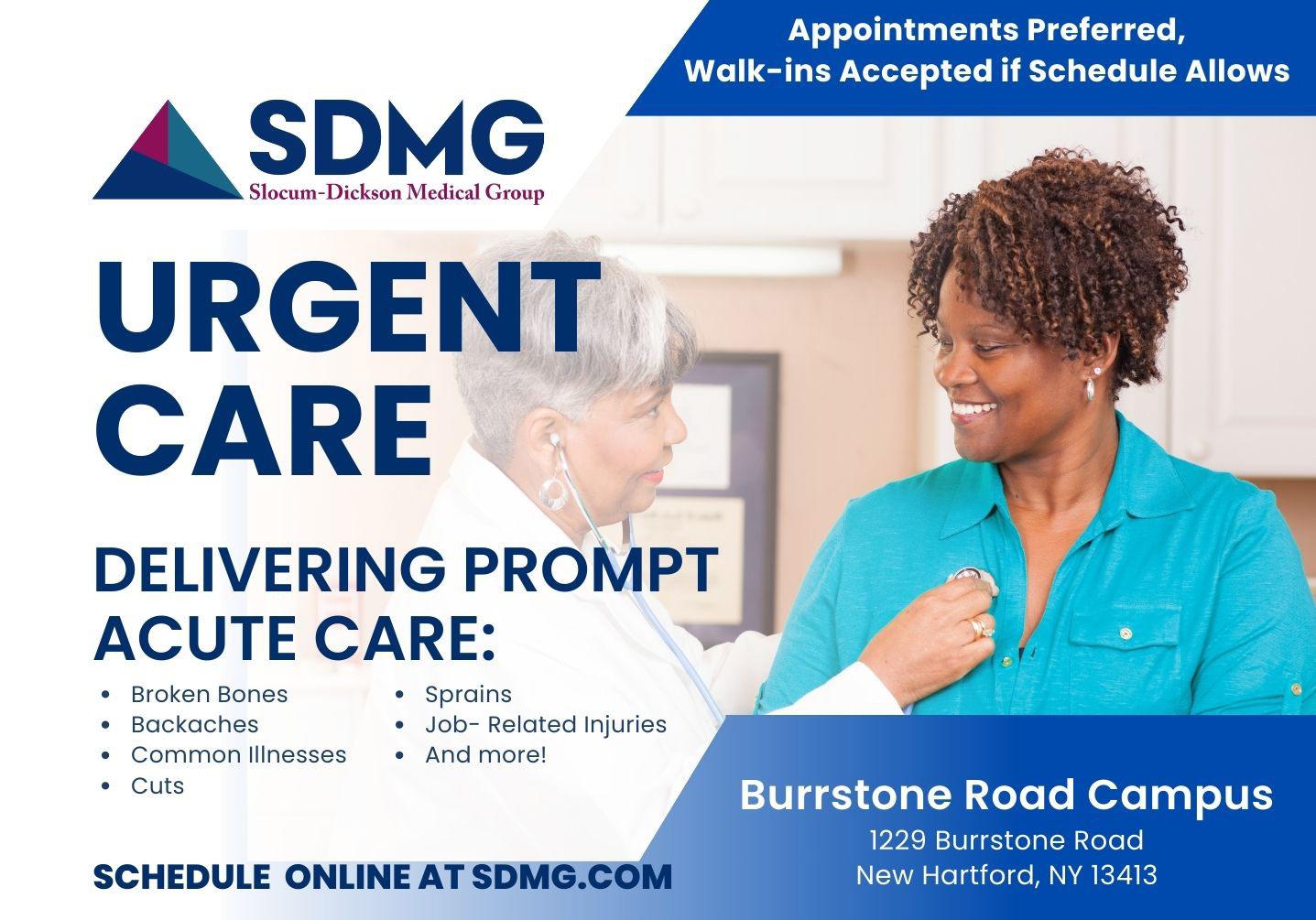
"There are many patients who
feel guilt, who say 'I gave this to myself,'" said Breitbart, who was not involved in the study.
The reality, he said, is that cancer is many different diseases, each caused by a complex interplay of genes and environment.
There has been a decades-old interest, though, in the question of whether daily stress, depression or even a less-than-sunny personality might help cause cancer, Breitbart noted.
Over the years, that has included studies suggesting that having a "fighting spirit" or "positive attitude" helps people survive cancer.
"We called it the tyranny of positive thinking," Breitbart said. "It was a real thing, and it still is."
There is a logic to the idea that depression or anxiety disorders could increase the risk of cancer. The conditions are linked to heightened odds of certain other physical health ailments, like heart disease. In that case, researchers believe the connection might partly be due to the ravages of stress hormones on the cardiovascular system.
Similarly, it's been proposed that stress hormones might dampen immune system activity enough to feed tumor development.
But when studies have delved into the question of whether depression and anxiety are linked to cancer risk, the findings have been "all over the place," Breitbart said.
Bassett Healthcare Network is proud of its cherished 90-year partnership with Columbia University, and now we’re honored to welcome cardiovascular specialists from Columbia to our heart care team. Together, we are embracing the latest in digital medicine to be at the forefront of rural healthcare.

Editor
Contributing Writers: Barbara Pierce, Deb Dittner, Gwenn Voelckers, David Podos, Deborah Jeanne Sergeant, Anne Palumbo, Daniel Baldwin
Manager: Allison Lockwood
By the time this edition of “In Good Health” hits the newsstands, I will have packed my bags, hired a cat sitter and stopped the mail.
I’ll be on my way to France for my annual solo sojourn to Paris to celebrate my birthday and further explore and enjoy one of my favorite places on earth.

In September, the tourist crowds have thinned, the weather is more to my liking (on the cooler side), and the locals have returned from holiday to open their shops, restaurants, homes and hearts to travelers like me.
My love affair with Paris was kindled on my 50th birthday. I wanted that important half-way milestone to be special and memorable. And it was!
I had dreamed of going to Paris for years and I wasn’t going to let my single status derail my dreams.
When I told my friends about my plans, I got mixed reactions. Many exclaimed “Oh, I could never do that! All alone?!”
They were right, of course. They would never experience the fun and fulfillment of traveling solo as long as they held onto that attitude.
Traveling alone, just like living alone, requires the right frame of mind to be successful and enjoyable.
But why travel alone in the first place? Why not grab a friend or two and make it a shared experience? Because the potential for self-discovery
and savoir faire that comes with solo travel is priceless.
I’m not suggesting an exclusive diet of solo travel, but I am encouraging you to consider this mode of travel, from time to time, for this important reason: You’ll gain both confidence and wisdom from your experience.
So, step on board and consider these benefits:
• You call the shots
When you travel alone, you are free to see and do whatever you like. Your decisions and itinerary are your own. And when it's just you, you are reminded of who you are, what you enjoy doing most, and what you like least.
with me or extend an invitation to join them. I’ve met some of the nicest, most interesting people this way.
When traveling with friends and family, we tend to stay focused on each other and lose the chance to meet people we might otherwise have met. That could be a missed opportunity, especially if you are single and hoping to meet someone new.
• You can release your adventurous spirit
By yourself (with no one watching), you may be willing to take more risks — dance at outdoor concerts, get a henna tattoo, eat gelato for breakfast, maybe even swim with the dolphins!
I’ve never gone swimming with dolphins, but I have sampled some pretty exotic food, wrestled Old Paint into submission on a horse trail and held on for dear life while rafting down the Colorado River.
• Likewise, you can find some heavenly time to yourself
When you travel with other people, their interests may be at odds with yours. And precious time can be consumed with the inevitable negotiations that come with trying to satisfy everyone’s needs and desires.
Traveling alone allows you to follow your heart and own path.
• You make new friends more easily
I’ve discovered this time and time again. When I’m on my own, other travelers and "locals" are more likely to strike up a conversation
Competitive sports can be a lot of fun for kids and teens, but starting a new season requires some planning.
Nemours TeensHealth, a website specializing in children’s health, offers some suggestions for kids and teens who are taking up a new sport or beginning a new season.
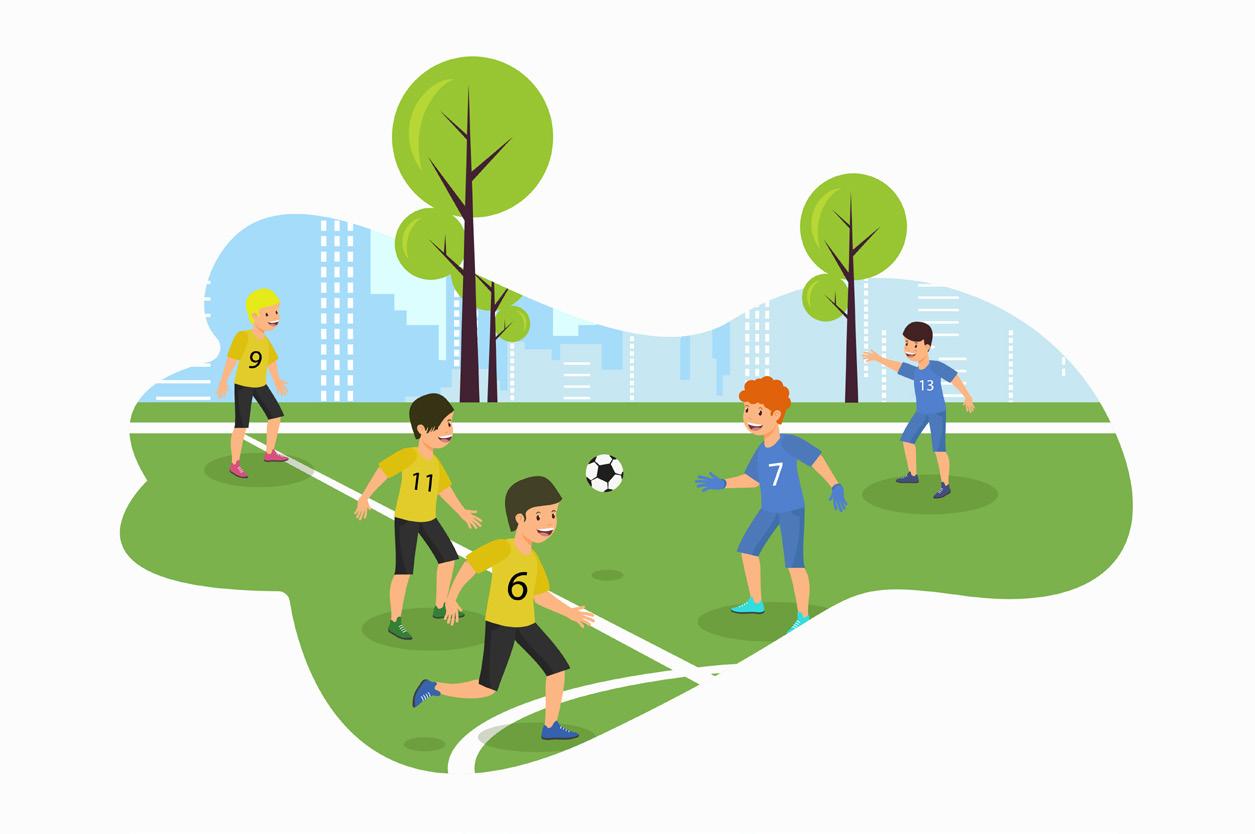
• Start by getting into shape. That will make it easier when you begin your sport.
You can do this by writing down an exercise plan. Ask your coach, gym teacher or trainer for workout ideas. If you can't get to the gym, apps and online workouts offer options for exercising at home.
Write down your goals for the
week and your workout plans. If you schedule specific workout times, it will help you stay motivated and stick to your exercise plan. Make a note of a workout you particularly liked so you can repeat it another week.
• Set realistic goals. While this can include general goals like making the team or getting in shape, smaller, specific goals are easier to achieve and can help you build toward your bigger goal.
Write down those goals and discuss them with a parent or coach. Set new goals once you reach those on your list.
• Gear up. If you're returning to your sport, make sure your
On your own and with fewer distractions, the opportunity for a tranquil, soul-soothing retreat is within your grasp. Whenever I travel, I like to build in time to myself to relax and recharge my batteries. Solo travel makes guilt-free “me” time possible.
Want to sleep in till noon, find splendid solitude in a secret garden, or enjoy your own company and a nightcap at the end of the day? Go for it, because you can.
• You learn a new language faster Je peux en témoigner! (I can vouch for that!). When traveling alone in France, I enjoy practicing the language. It was either that or go
hungry. Ha!
But seriously, without a traveling companion to talk with or to aid in translation, I had to fend for myself. While I am far from fluent in French, I can at least order a croque-monsieur — a hot ham and cheese sandwich on my own. Want to learn a language more quickly? Travel solo.
• You build your confidence and sense of independence
Even a small jaunt can boost your self-confidence. All the decisions are yours, including your budget. You decide how to get where you’re going, where to stay, and how much to spend on transportation, food, accommodations, and things to do.
In no time, you’ll discover your own resourcefulness, ability to solve problems, and capacity to spend some time alone. Those are invaluable, lifelong lessons.
Solo travel is ripe with opportunities for self-reflection, growth, and joy. Start dreaming today. Pack your bags, and with no reservations (pun intended), set out on your journey with a spring in your step and a smile on your face for all the hidden treasures that await you.
Gwenn Voelckers is the founder and facilitator of Alone and Content empowerment workshops for women (now on hiatus) and the author of "Alone and Content: Inspiring, empowering essays to help divorced and widowed women feel whole and complete on their own " To contact Voelckers or purchase her book, visit www.aloneandcontent.com

equipment still fits. If you're new to a sport, ask your coach what you'll need.
Secondhand or borrowed gear can save you money. Make sure all your gear is clean and safe to use. Ask your coach to look it over if you're unsure, Nemours suggests.
• Think about attending a sports camp. This can be a way to practice skills before a season begins. College players, coaches or other professionals often teach these camps.
Most include drill sessions, then scrimmages toward the end of the day. Drill work helps improve skills, while scrimmaging with other campers lets you practice those skills. This
can give you a sense of what it's like to play on a team.
• See your doctor for a sports physical. It's a busy season for these physicals, so make sure your family sets up an appointment before your season starts. If you wear glasses, consider visiting your eye doctor to check your prescription and get the right protective eyewear.
Be sure to build rest into your schedule, with at least one to two days off a week from competitive sports and training. Take at least two months off each year from any particular sport to prevent repetitive stress injuries, Nemours advises.
Q: As soon as you mention the name Salvation Army, many people immediately conjure up an image of a person on a cold windy wintry day ringing a bell for donations in front of a Salvation Army money kettle. While that image is essentially true, the Salvation Army is much more than that, isn’t it?
A: Absolutely. First and foremost, our mission is to preach the gospel and meet human needs without discrimination.
Q: Along with preaching the gospel what other services does your Salvation Army offer to the community?
A: For this facility we have a community meal we offer every Monday, Wednesday and Friday from 5 to 6 p.m. at no cost. We have our gleaning services every Monday and Wednesday at 10:30. We have been offering gleaning services for approximately three years. In that program anyone can come to our facility and get a free bag of food. For example, if you have four people in your house hold you will receive four
bags of food, again at no cost.
Q: That is quite incredible. Where does this food come from?
A: We get donations from our local Hannaford, then out by the Thruway we receive food donations from Burger King, Starbucks, Chickfil-A, Popeyes and Apple Green.
Q: All these vendors give you this food for free?
A: Amazing as it sounds, yes, free.
Q: Who actually are the people you serve? Are they from families that are in financial distress, are they homeless etc.?
A: We find out that the majority of the people we serve are financially between the middle- and lower-class incomes. However, we do not ask for their financial records but rather rely on trust when they say they are in need. We do however ask where they live and how many people are in their households.
Q: Does your center offer a food pantry?
A: Yes, we do. In that capacity we serve the towns of Mohawk and right here in Herkimer.
Q: Talk a bit about your spiritual services that you provide. Is it for anyone who may be interested in attending?
A: We obviously have church service on Sunday. Those services are from 11 to 12. We also offer Sunday school starting at 10 on Sundays as well; it is a small group of bible study. Services are open to all. Every Tuesday at 6 p.m. is women’s group. In this group sometimes the women make crafts, sometimes they play games and or cook, and work on service projects. On Wednesday at 11 we have bible study which is open to everyone.
Q: It is evident that many people in this community rely on your pro grams. Does anyone come to mind whom you worked with who was hav ing a really bad time but were turned around in a positive way from receiv ing your services?
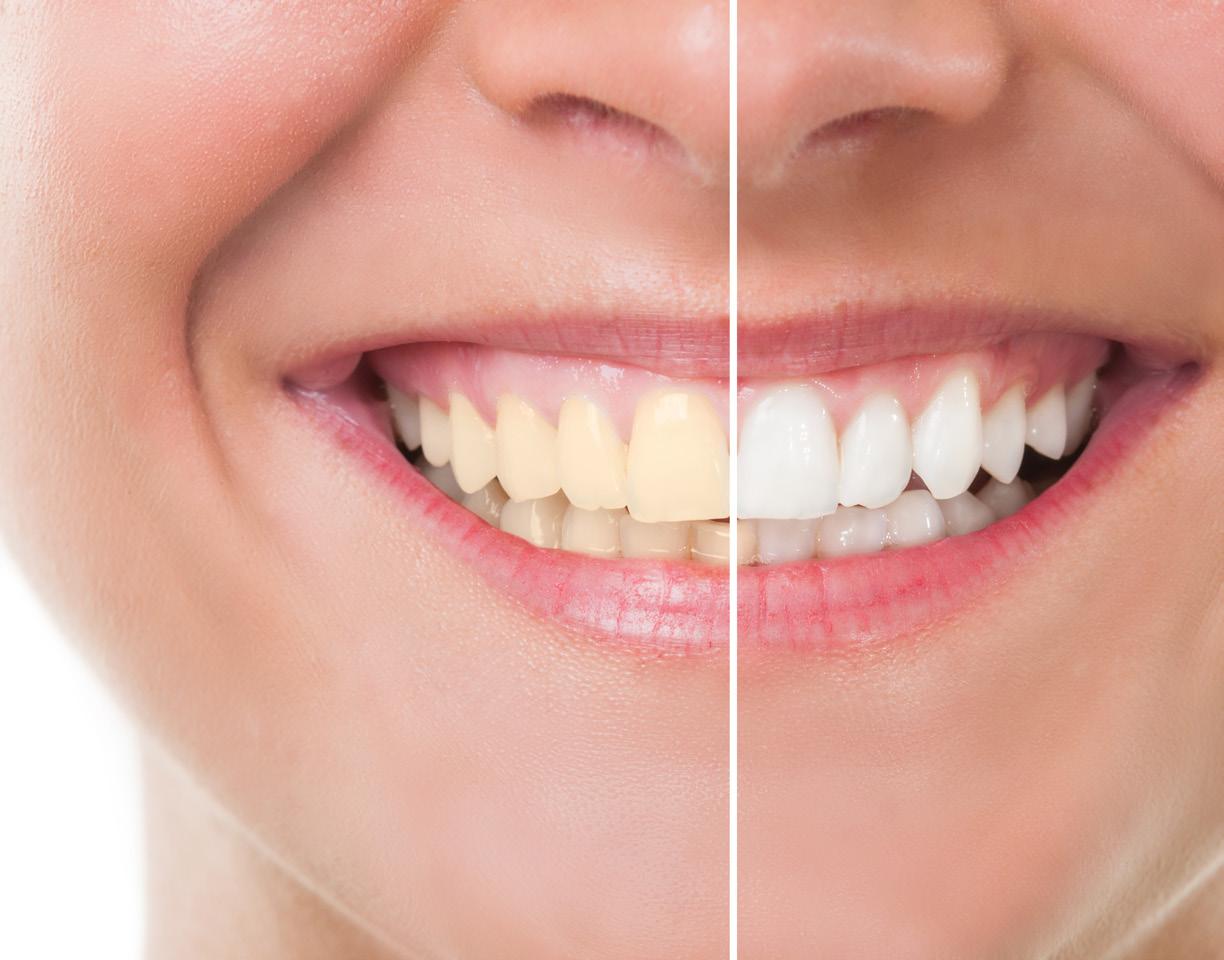
A: Yes, this one gentleman comes to mind. He volunteered for us from time to time. He was addicted to drugs. Our community meal cook, Paul, took this person in to his own home. There was a program we could get him into but he had to detox first. The last time I heard how he was doing he was cleaned up and been off of drugs. I truly believe that by his relationship with us and meeting our cook, Paul, it was perfect timing to help this person and the Lord made it so.
Q: How does the organization support itself?
A: Well, our biggest fundraising that helps keep our lights on so we can provide all these services would be our bell ringing during the holiday Christmas season. We have other fundraisers as well. Another big one for us is held in January. That is our chicken barbecue. We also receive funding from the Food Bank of Central New York and a number of federal grants as well as support from our local United Way.
Q: Do you accept personal checks from people and if someone wanted to leave you an endowment how is that handled?
A: Yes, we do accept personal checks and throughout the year we do receive those donations. In regards to someone who may want to set up an endowment we do have personnel in our Syracuse headquarters who are trained to handle those kinds of financial transactions.
I also want to mention that this year we are starting a brand-new fundraiser at the kettle stand. At Walmart on both ends of the store we will have a system set up for donations called tip tap. All you have to do is take your credit card like you would do for other purchases and tap. It would be a set donation of $5. Of course, people can still drop their coins and or dollars into the kettle if they prefer.
Q: How does someone contact you and learn more about the Herkimer Salvation Army?

A: More information can be found on our Facebook page: www. facebook.com/TheSalvationArmyHerkimer or call us at 315-866-1240.
Enjoy reading In Good Health newspaper? The paper is free to you but very expensive to produce and distribute. Keep the publication going. Consider supporting it. If you are a reader, please become a paid subscriber. If you’re a nonprofit, a medical practice or organization, consider advertising. You will get a great deal of exposure since the paper is everywhere for the entire month. We will even design your ad at no charge.
For more information, send an email to editor@MVhealthnews.com
— Type “Support” on the subject line.
Head of Herkimer Salvation Army explains the help the nonprofit provides to people (it’s not just food)
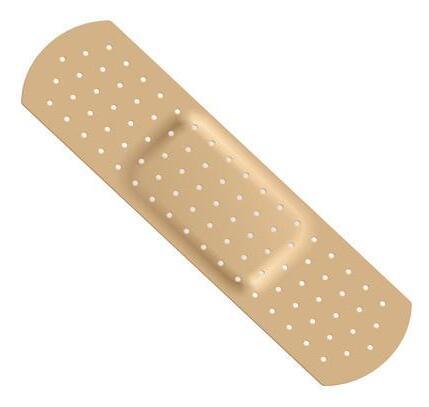 By Barbara Pierce
By Barbara Pierce
The most common sex problem that men talk to their health care professional about is erectile dysfunction or ED, according to urologyhealth.org.
Physician assistant Christopher Emerson of Upstate Urology at Mohawk Valley Health System shares some things we should know about this condition:

1.How prevalent is ED?
Erectile dysfunction is a very common condition, particularly in older men, said Emerson. Fifty percent to 70% of men older than 60 may have ED; 30% to 40% of men aged 30 through 59; only 3% of men younger than 30.
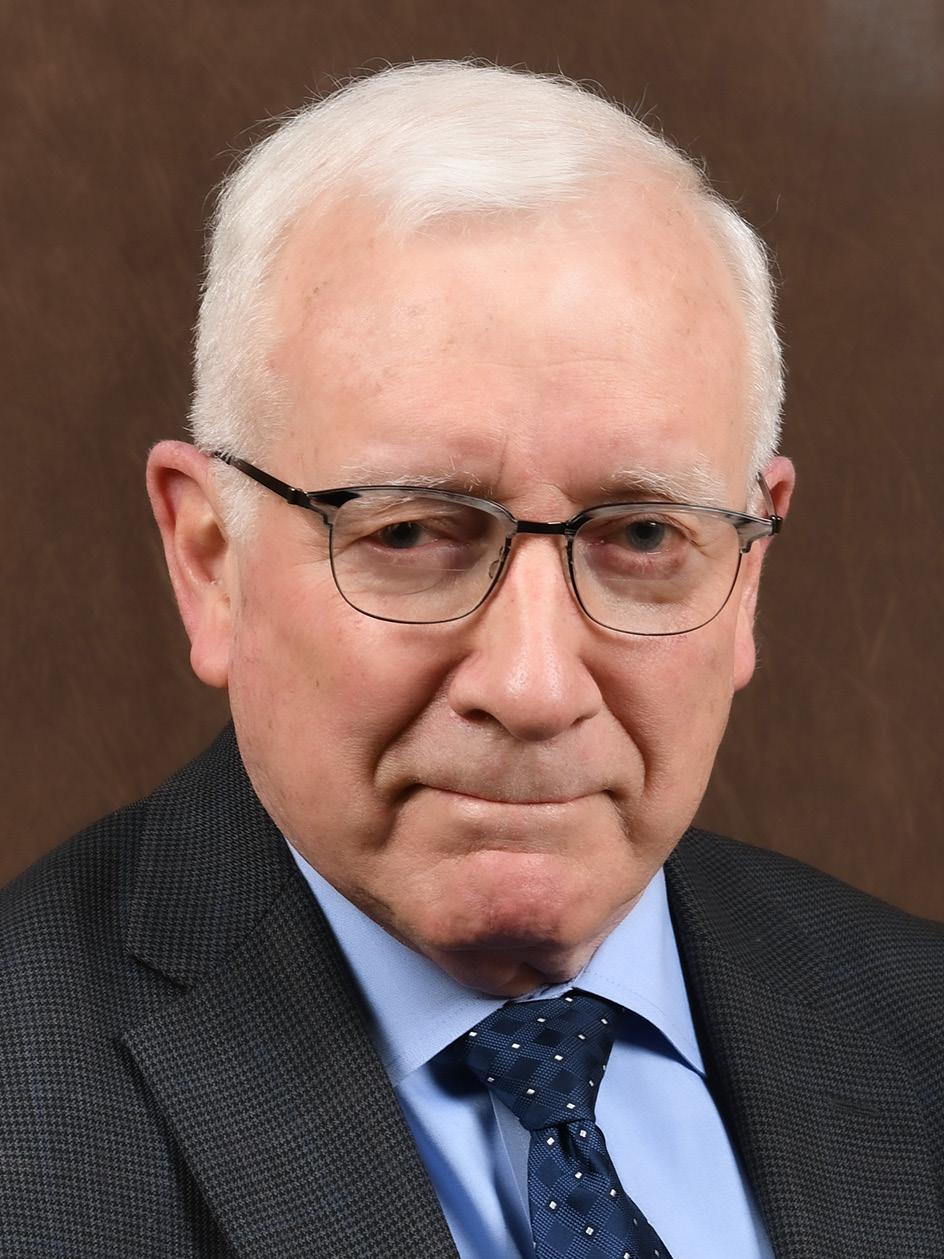
2.What exactly is ED?
ED is a complex condition with various psychological and physical features that cause it. Also known as impotence, it’s the inability to get and keep an erection firm enough for sex.
Sharon
• Hormonal problems: Low levels of testosterone or excessive levels of estrogen which can cause a low sex drive. Testosterone is the main sex hormone in men. If testosterone levels drop below the normal range, the result can be an inability to get and keep an erection. Men who have unexplained anemia, bone density loss, diabetes, exposure to chemotherapy, radiation therapy to the testes, HIV or a history of chronic drug use are at risk for low testosterone.
• Psychological factors like anxiety, depression, stress and a variety of other emotional issues can be a cause.
Most men have some problems with erections from time to time, but if ED happens much of the time, it should be treated. Finding the cause will help treat the problem and help with your overall well-being.
3.What are the causes?
Emerson shared the top causes:
• Limited blood flow to the penis: Anything that limits blood flow to the penis can cause ED; many health issues can cause limited blood flow, such as arteriosclerosis (clogged arteries), high blood pressure or pelvic trauma. Men who have clogged arteries in their heart often have the same problem with the arteries that supply the penis — ED could be the first sign of developing a heart attack in the future.
• Neurologic disorders such as multiple sclerosis, Parkinson’s disease, spinal injuries, diabetic neuropathy, radiation side effects or consequences of surgery may be a cause.
Sharon Kanfoush Wellness, LLC
Make the decision to FEEL BETTER: Body, Mind & Spirit!
50%Off1stSessionwith Code:TRYITOUT!
RESILIENCE MIND - BODY
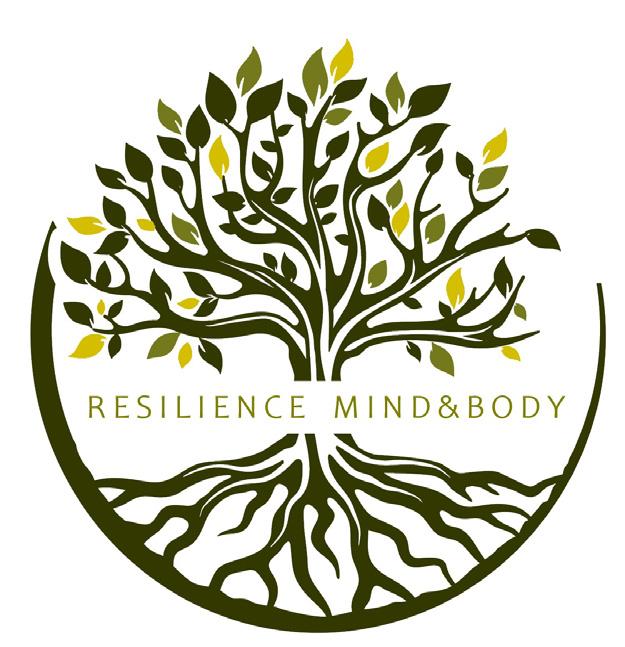

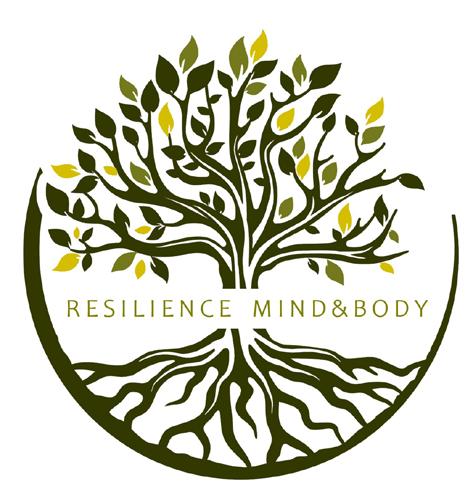
Difficulty achieving and maintaining a suitable erection can be a side effect from many medications, both prescription and over-the-counter.
• Lifestyle choices can contribute to all of the above causes, including cigarette smoking, physical inactivity, a poor diet, excessive use of alcohol or substance abuse.
In the past, many men were told by their health care professional: “It’s all in your mind” and sent home. Now, for most men, health care professionals are able to pinpoint the cause of erection problems and successfully treat 90% to 95% of them.
4.How is ED treated?
Treatment must be tailored to the individual, as it depends on a detailed history and physical examination, said Emerson. Blood tests and hormone analysis may be required. Sexual partners are often invited to the discussions so both partners can share the same information and understand the recommendations and goals of treatment. Sometimes an ultrasound vascular flow study of the penis is helpful in designing the best solution.
therapy uses self-injection of the penis with very small amounts of vaso-active medications each time an erection is desired. Penile implant–prostheses are surgically implanted and come in a variety of types, rigid, semi-rigid and inflatable.
The majority of men with ED can be sufficiently helped using the PDE-5 inhibitors, said Emerson. Occasionally the side effects of the medication — most often headaches — are severe enough to require alternate treatment. Also, these medications cannot be used by anyone that requires nitroglycerin or similar cardiac medications as the combination might result in a dangerous drop in blood pressure.
Low testosterone levels can cause a man’s sexual desire to decrease enough to contribute to ED. Replacing his testosterone to normal levels can sometimes be all that is needed to solve the ED problem.
One-on-One, Small Group & Corporate:
• Yoga Therapy, Meditation & Mindfulness
• Somatic Movement & Pain Self-Management
• Personal Training & Wellness Coaching
• Chair Yoga & Chair Fitness
BODY
• Rehabilitative Qigong
In-person or virtual!
In-person or virtual!
50%Off1stSessionwith TRYITOUT! FREE Consultation!
(315) 982-7144 sharonkanfoushwellness@gmail.com sharonkanfoushwellness.org skanfou.gumroad.com
Sharon Kanfoush, PhD, C-IAYT, CEI3, ERYT500, ISSA-CPT 2709 Genesee Street, Utica NY 13501 (315) 982-7144 sharonkanfoushwellness@gmail.com sharonkanfoushwellness.org skanfou.gumroad.com
FREE Consultation!
Treatment possibilities include: Medication classified as PDE-5 inhibitors, such as Viagra, Levitra, Cialis, and a more recently approved drug, Stendra, helps dilate the blood vessels and improve blood flow to the penis.
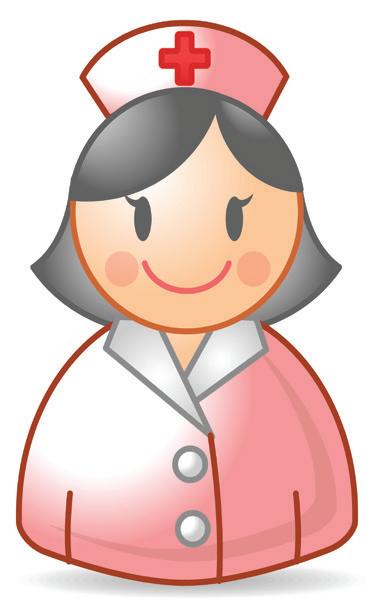
Other options include a venous constriction ring that fit firmly around the base of the penis to inhibit premature loss of an erection. Or a vacuum erection device that creates an erection in a plastic cylinder which can then be maintained by a very snug ring around the base of the penis. Intra-corporeal injection
More than one treatment modality may often be required, said Emerson. If the first doesn’t work, your health care professional will try another.
Don’t be embarrassed to talk about this. Find out if there could be an underlying health issue that might be causing erectile dysfunction. The longer you ignore the symptoms, the more embedded the problem might become.
If you take better care of your car than your body, you aren’t alone.
According to the Men’s Health Network, there’s a steady deterioration in the health and well-being of men.
Living long and living well is an uphill battle for most men.
Compared to women, they eat worse, smoke more, drink harder, exercise less and suffer more injuries.
In 1920, women outlived men by only one year. Today, CDC statistics show that the life ex-pectancy gap has widened: women survive men by more than five years. The National Institutes of Health reports that men die at higher rates than women for all of the top 10 causes of death.
It’s no secret that many men hesitate to see a health care professional. And that can lead to a number of problems down the road.
This is the biggest problem for men: the lack of health care earlier in life. Anyone not connected to a health care professional to screen for major health problems is at greater risk of disease and death.
Many of the top causes of death are preventable and treatable if found early. Here are some of the most common men’s health issues that every man should know about and how to reduce your risk:
Although heart disease is the leading killer of both men and women, almost twice as many males die of cardiovascular conditions. According to the American Heart Association, one in three men has some form of heart disease.
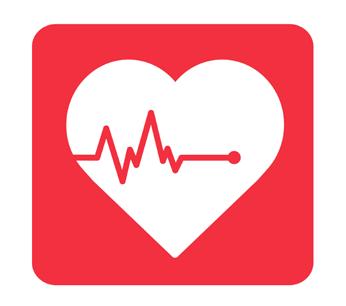
“High blood pressure is a leading risk factor for heart disease and stroke,” said physician Cynthia Jones, medical director of Mosaic Health Utica and board member of the AHA. “Because it often has no

symptoms, it’s known as ‘the silent killer.’”
High blood pressure causes harm because it increases the work of your heart and blood vessels, making them work harder and less efficiently. This can damage blood vessels, making them weak, stiff or narrower and that can harm important organs of your body — your heart, kidneys, brain, and eyes, she added.
High blood pressure raises your risk for serious events like a heart attack or a stroke. It’s important to know if you have it as there are steps you can take to prevent serious outcomes.
If you don’t know you have high blood pressure, and you don’t take steps to control it, in addition to a heart attack or a stroke, it can cause heart failure, kidney disease, loss of vision, or sexual dysfunction.
Other things you can do to reduce risk of heart disease or stroke include: stop smoking, get active, eat better, and control your blood sugar, said Jones.
Men are almost twice as likely to develop Type 2 diabetes as women, says the CDC.
“Having diabetes puts a person at high risk for other medical illnesses,” said registered nurse Janet Brown-Friday of the American Diabetes Association. “Diabetes can lead to health complications such as heart disease, kidney disease, nerve damage and problems with feet, oral health, vision and hearing problems, and mental health.”
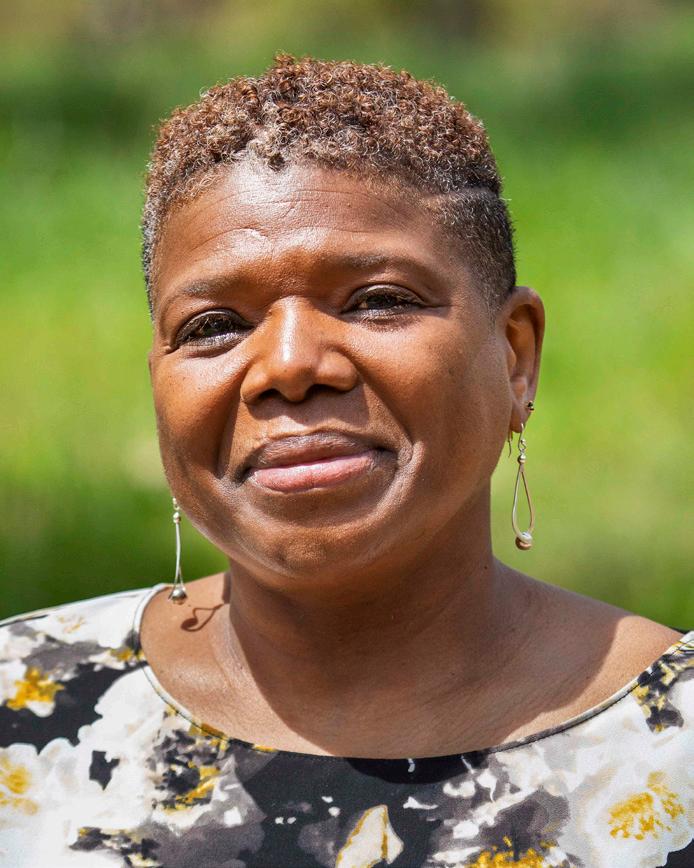
“With the prevention of diabetes, one may be able to prevent or delay the onset of these conditions,” she added.
Risk factors for diabetes that one can control are weight and level of activity, she said. “According to the ADA, one can make small changes to their lifestyle for big results — like
doing 30 minutes of exercise a few days a week — or make small changes in what you eat or finding ways to manage stress.”
If you have a family history of diabetes, it’s important to see your doctor for regular blood sugar screenings.
According to the American Lung Association, lung cancer is the leading cancer killer. More men are diagnosed with it than women. African-American men have a higher risk of dying from the disease. Smoking is the leading cause.
Tobacco is responsible for 90% of lung cancer, which puts the burden of prevention efforts on stop smoking. Besides smoking, exposure to secondhand smoke or exposure to asbestos or radon are also risk factors.
Prostate cancer is the most common cancer found in men. It’s treatable if found in early stages. This can be a challenge, since prostate cancer may have no symptoms.

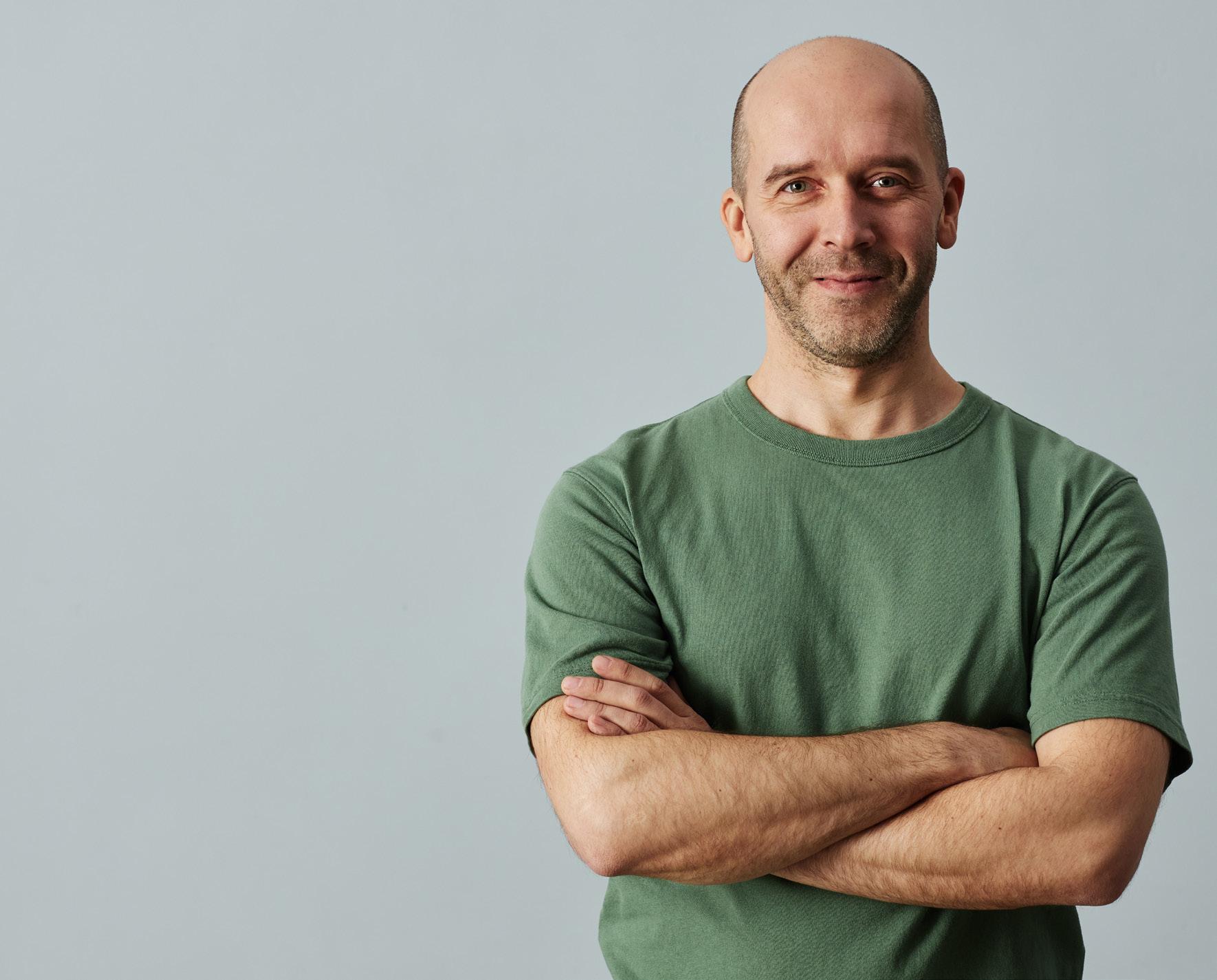
Older age is a risk factor for prostate cancer, but younger men should not be complacent. 30% of prostate cancers occur in men younger than 65, says the American Cancer Society. Men with a family history of prostate cancer or who are African American are also at higher risk.
Men older than 45 should seek a regular prostate cancer screening, says ACS.
Free prostate exams during September will be offered by Upstate Urology at MVHS; see mvhealthsystem.org/prostate-screening form for details and to sign up.
Don’t be an average man —get on board with a health care professional and protect your health today.
Men die at higher rates than women for all of the top 10 causes of death.
• Heart: Almost twice as many males die of cardiovascular conditions compared to women
• Lung cancer: More men are diagnosed with it than women
• Diabetes: Men are almost twice as likely to develop Type 2 diabetes as women
No. 1 – Heart Disease
No. 2 – Cancer
No. 3 – Unintentional Injuries
No. 4 – Stroke
No. 5 – Chronic Obstructive Pulmonary Disease (Lung Diseases)
No. 6 – Diabetes
No. 7 – Influenza and Pneumonia
No. 8 - Suicide
No. 9 – Kidney Disease
No. 10 – Alzheimer’s Disease
Source: Illinois Department of Public Health (IDPH)
“Men and women are different animals, not meant to live together!”
Scrolling through the internet, I was surprised to see this blog, from someone who calls himself “Solitary Beast.”
“It never works!” he claims. “The man pays most of the bills, but is exiled to some dark, unwanted corner of the house, separate from the woman and all her tacky, floral stuff…The woman decorates the entire home the way she wants: pastel colors, lace, and throw pillows. The man’s prized possessions are locked down in the basement, without a second thought.”
I admit he has some points, but I think it’s possible for a man and a woman to live together companionably, both reasonably happily. There are some things Solitary Beast may not understand about how men and women differ. Things that maybe would let him be happy in a close relationship.
• Different styles of communication: “Much of the frustration, disappointment and anger that couples have toward each other come from faulty communication and incorrect interpretations of each other’s behavior and communication,” said Aaron Beck, the psychiatrist who developed the cognitive therapy approach.

Communication is tough. It’s tough because much — even most — meaning in conversation isn’t in the words we use but is filled in by the person listening. We talk and hear through our own perspective. Like trying to see through someone else’s glasses; you can’t see clearly through her glasses and she can’t see through yours.
Men are fixers; women want to be heard. In conversation, men try to “fix things,” to solve the problem that the woman is sharing, while the woman just wants to vent, just wants to be heard. She’s not looking for a solution, so she feels misunderstood when he tries to solve the problem she’s venting about.
Therefore, real understanding of what the other person is saying is critical. This means that you put yourself in the other persons’ shoes and try to see the world through her eyes. Most of our conflicts are caused because we really don’t understand where each other is coming from.
Making an effort to discover some semblance of truth in what she is saying is the most powerful listening tool. Find some grain of truth in what she is saying and agree, even if you think she’s wrong.
For example, if she says: “You always make such a mess leaving your stuff all over the house!” you could say, “You’re right. I don’t always put my stuff away,” instead of going on the defense.
• Appreciate the strengths of your partner; accept her shortcomings. Cut your partner some slack. Sometimes people get very annoyed by aspects of their partner that really aren’t that big of a deal. Since she’s probably not going to change the thing that annoys you, what are your options, other than continually banging your head against a brick wall? How can you work around it and reduce the stress you feel?
Accepting her weaknesses doesn’t mean being blind to her shortcomings. It just means you stop fighting it. You work around it.
For 15 years, I lived on a boat
with my husband; he was good at this. If you asked him what was my biggest shortcoming, he’d say “She could never learn to tie a bowline knot!” Living on a boat, one must know how to tie a bowline and I learned and I learned —but under pressure, I’d forget. He could tie one behind his back.
But he accepted that tying a bowline was something I didn’t do. Instead, he focused on the fact I could do laundry by hand on the boat, I could prepare dinner on the top of the refrigerator and cook it on a stove that’s swaying. He appreciated that I did well with living on the boat. He focused on what I could do instead of what I couldn’t do. He was aware of my shortcomings; he just didn’t fight them, but focused on the things he appreciated about me.
Letting her know what you appreciate about them is powerful reinforcement.
• Use praise and positive reinforcement freely. This is the most effective way to get her to do what you want; not negative correction.
Couples who show appreciation toward each other are more likely to maintain healthy relationships,
because when someone feels appreciated, they’re less likely to take their significant other for granted.
Appreciation works so much better than ‘mansplaining,’ (when a man explains something to a woman, in a condescending, overconfident and often inaccurate manner).
Praise her when she makes the move in the slightest direction you want her to go and I guarantee she’ll keep going in that direction. We’re all suckers for praise.
Living with a woman may not work for Solitary Beast, but it’ll work better for you if you give these suggestions a try.
Barbara Pierce is a retired licensed clinical social worker with many years of experience helping people. If you would like to purchase a copy of her book, “When You Come to the Edge: Aging” or if you have questions for her, contact her at barbarapierce06@yahoo.com.

Certain foods are key to reducing heart disease risk, so it’s important to eat them to stay healthy.
A globally focused study looked at foods commonly considered to be healthy to better understand this.
Consuming fruits, vegetables, legumes, nuts, fish and whole-fat dairy products is key to lowering the risk of cardiovascular disease (CVD), including heart attacks and strokes. The study was led by scientists at McMaster University and the Population Research Health Institute (PHRI) in Hamilton, Ontario, Canada.
The investigators noted that there are various ways to achieve a healthy diet — for example, including moderate amounts of whole grains or unprocessed meats.
For the study, the researchers analyzed data from multiple studies that included 245,000 people in 80 countries. They derived a diet score from PHRI’s ongoing Prospective Urban and Rural Epidemiological (PURE) study. The team used that to
measure health outcomes in different parts of the world and in people with and without prior heart disease.
“Previous diet scores — including the EAT-Lancet Planetary Diet and the Mediterranean diet — tested the relationship of diet to CVD and death mainly in Western countries,” senior author Salim Yusuf, principal investigator of PURE, said in a university news release. “The PURE Healthy Diet Score included a good representation of high, middle and low-income countries.”
The score focused on exclusively protective, or natural, foods.
“We were unique in that focus. The other diet scores combined foods considered to be harmful — such as processed and ultra-processed foods — with foods and nutrients believed to be protective of one’s health,” said study first author Andrew Mente, a PHRI scientist.

“There is a recent increased focus on higher consumption of protective foods for disease prevention,” he added. “Outside of larger amounts of fruits, vegetables, nuts and legumes,
Moderate amounts of fish and whole-fat dairy were linked with a lower risk of heart disease and premature death, Mente said.
“The same health outcomes can be achieved with moderate consumption of grains and meats — as long as they are unrefined whole grains and unprocessed meats,” he added.
Worldwide, nearly 18 million people died from cardiovascular disease in 2019 — about 32% of all deaths, according to the World Health Organization. Heart attacks and strokes caused about 85% of these deaths.
Based on the healthy diet score, a typical day should include two to three servings of fruit, two to three servings of vegetables, one serving of nuts and two servings of dairy.
The diet should also include three to four weekly servings of legumes, and two to three servings of fish. Whole grains could be substituted at one serving daily, as could unprocessed meat or poultry.
The findings were published July 6 in the European Heart Journal.
Some quinoa needs to be rinsed to remove the bitter-tasting compound that naturally coats it. Although most packaged quinoa bought in the U.S. comes “prerinsed,” I always rinse mine under cold water for a few minutes, using a fine sieve. Also, quinoa is pretty high in oxalates, which may cause concerns if you have kidney issues. Cooked quinoa, stored in an airtight container, can last up to a week in the fridge.
(pronounced KEENwah) is a whole grain whose popularity has skyrocketed in recent years. Beyond being delicious, versatile and easy to prepare, quinoa is so nutritious that NASA feeds it to crews on long space missions.
Considered a bona fide superfood by many, quinoa serves up a powerful mix of desirable nutrients, many of which have been linked to the prevention of disease.
Let’s take a look at four good reasons to embrace this healthy whole grain.
1. Higher in protein than most whole grains.
Quinoa not only packs a whopping 8-9 grams of protein per cooked cup, it delivers protein that’s “complete,” which is uncommon among grains. Complete proteins contain all nine essential amino acids (protein’s building blocks) that your body can’t make on its own. Feeling sluggish, weak, under the weather? You may not be getting enough protein.
2. Loaded with heart-healthy fiber.
Quinoa delivers 5 to 6 grams of fiber per cooked cup, putting a sizable dent into the recommended 25 to 30 total grams we should be eating daily. Fiber keeps us regular, lowers cholesterol levels, helps prevent spikes in blood sugar after eating and may help us live longer. Studies suggest that increasing your fiber intake—especially from whole grains—is associated with a reduced risk of dying from heart disease and some cancers.
3. Packed with important vitamins, minerals, and antioxidants.
Regularly eating quinoa can help meet your needs for a wide variety of vitamins, minerals and phytochemicals (antioxidants that reduce inflammation and promote
longevity). Quinoa’s top five include folate, manganese, magnesium, phosphorous and zinc, all of which come together to help build bones, keep our immune system humming, promote healthy cell growth (crucial during early pregnancy), manage blood pressure and so much more.
4. Great for people with gluten intolerance.
Unlike most whole grains (though quinoa is technically a seed, like buckwheat), quinoa is gluten-free. What sets it apart from some gluten-free substitutes in grocery stores—many of which are made from refined starches and may have added sugar, fat, and salt—is its bounty of nutrients coupled with its paucity of fat, sugar, sodium, and cholesterol. Go, quinoa! Go, happy gut!

Anne Palumbo is a lifestyle columnist, food guru, and seasoned cook, who has perfected the art of preparing nutritious, calorie-conscious dishes. She is hungry for your questions and comments about SmartBites, so be in touch with Anne at avpalumbo@aol.com.


Serves 5-6
1 cup quinoa, rinsed, drained
2 cups water
½ cup pitted Kalamata olives, quartered
½ small red onion, thinly sliced (optional)
1 cup cherry tomatoes, halved
1 medium cucumber, peeled, seeded, diced
1 cup crumbled feta, divided ½ cup basil, slivered juice of 1 lemon
1/3 cup olive oil
2 teaspoons Dijon mustard
1 clove garlic, minced ½ teaspoon kosher salt
¼ teaspoon coarse black pepper
Excellus BlueCross BlueShield is once again inviting nonprofit organizations to apply for 2023 Health Equity Innovation Award (HEIA) funding. The awards help fund health and wellness programs that address racial and ethnic health disparities in Upstate New York. The online application period closes at 11:59 p.m., Sept. 14.
“Excellus BlueCross BlueShield Health Equity Innovation Award funding aims to support initiatives, programs, and research that specifically target and address the root causes of health inequities, with a focus on addressing structural racism. We believe that by investing
Deadline for applications is Sept. 14
in projects that tackle the underlying social, economic, and systematic factors that contribute to health disparities, we can work towards creating a more just and equitable healthcare system,” says physician Lisa Harris, senior vice president and chief medical officer, Excellus BlueCross BlueShield.
501(c)(3) organizations in Excel-
lus BlueCross BlueShield’s service area are invited to apply for Health Equity Innovation Award funding up to $30,000.
Application proposals for innovative initiatives or projects that have proven data outcomes and can be expanded will be considered. Proposals must include clear, defined goals for reducing health disparities and the burden of health inequities and social disadvantages. Organizations will be required to specify how funding will measurably assist in improving racial and ethnic health equity outcomes.
Health Equity Innovation Award categories include, but are not limited to:
1. Place the quinoa in a saucepan with the water; heat to a boil. Reduce to a simmer, cover and cook until all the water is absorbed (about 15 minutes). Set aside.
2. Place the olives, onion, cherry tomatoes, cucumber, ¾ cup feta and basil in a large bowl. Add quinoa; stir gently to combine.
3. Whisk together the lemon juice, olive oil, mustard, minced garlic, salt and pepper. Pour over the quinoa mixture; toss to combine. Let stand at room temperature for an hour before serving. Refrigerate for longer keeping. Stir gently before serving. Sprinkle each serving with remaining feta crumbles.
Reducing health disparities in racial, ethnic, LGBTQIA+ communities, people with disabilities, people living in rural or urban communities, or other groups of people that may be at a higher health risk for:
• Medical issues and conditions (chronic or acute)
• Behavioral health or mental health conditions
• Negative outcomes from the above, including death or suicide
For additional information, please visit: www.excellusbcbs.com/ community, and scroll to the Health Equity Innovation Awards section. Award winners will be announced in late October.
Eight healthy habits could add years to your life.
A new study of more than 700,000 U.S. veterans breaks down the habits that when adopted by middle age, can help someone live substantially longer than folks who don't have these habits.
These are the big eight:
• Be physically active.
• Don't smoke.
• Don't get addicted to opioids.
• Don't binge-drink on a regular basis.
• Eat a healthy diet.
• Manage stress.
• Practice good sleep habits.
• Maintain positive social relationships.
The study found that men with all those habits at age 40 could live an average of 24 years longer than men who have none of them. Women could gain an additional 21 years compared to their peers who have none of these habits.
The findings were presented in July at a meeting of the American Society for Nutrition, in Boston.
“We were really surprised by just how much could be gained
with the adoption of one, two, three or all eight lifestyle factors,” said study presenter Xuan-Mai Nguyen, a health science specialist at the U.S. Department of Veterans Affairs and student at Carle Illinois College of Medicine in Urbana, Illinois.
“Our research findings suggest that adopting a healthy lifestyle is important for both public health and personal wellness. The earlier the better, but even if you only make a small change in your 40s, 50s or 60s, it still is beneficial,” Nguyen said in a meeting news release.
Researchers used data from medical records and questionnaires collected between 2011 and 2019 from more than 719,000 participants in the VA's Million Veteran Program. This included adults ages 40 to 99 and included more than 33,000 deaths during follow-up.
Low physical activity, opioid use and smoking had the biggest impact on life span among the study participants. These were associated with a 30% to 45% higher risk of death during the study period.
Stress, binge-drinking, poor diet
When it comes to health, prevention is the best medicine. Many avoidable diseases can cause extensive damage to our health, especially as we age or for those with other medical conditions or a weakened immune system.
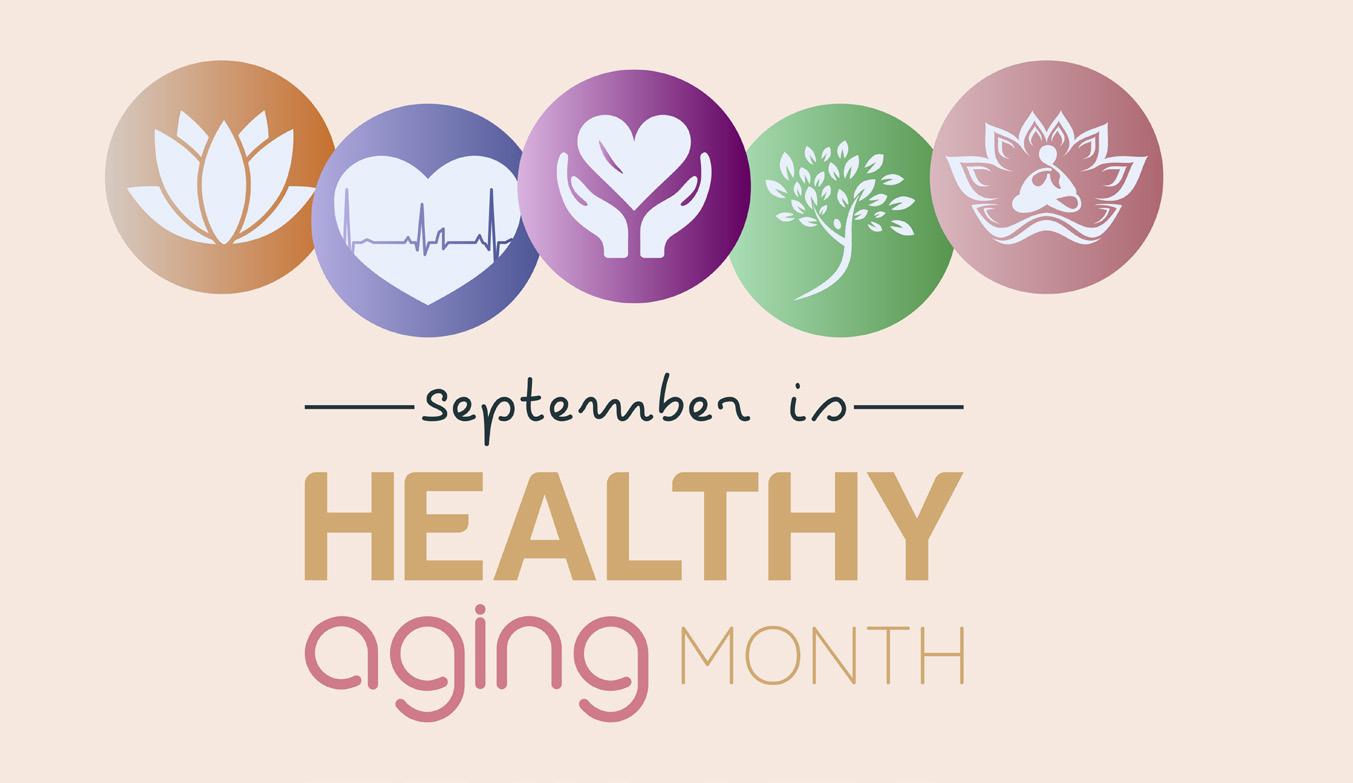
While many preventable illnesses are treatable, they can nonetheless result in lasting complications. So getting vaccinated against certain diseases is vital to prevent these illnesses from taking hold in our bodies. We all know vaccinations are standard during childhood, but adults need immunizations, too. However, adults require different protections or may need booster shots to ensure the vaccines they received in the past remain effective.
The goal of vaccines is to reduce your chance of infection by developing immunity through your body's natural defense system. When bacteria or viruses get into your body, they reproduce and attack your system. Your body's immune system has various approaches to fight off this infection. For example, white blood cells can learn how to protect your body from particular germs that you've been vaccinated against.
The way this works is vaccines use a small amount of the particular
virus or bacteria and introduce it into your system. The antibodies then learn how to fight off the germs in the event you encounter them in a larger quantity. For this reason, you may have a slight reaction to the vaccine, such as a fever, while your body works to fight it. Still, this is very minor compared to the complications of getting a preventable disease. There are many types of vaccines, and each can interact with your body differently. Some vaccines require multiple doses or else a booster later on to rebuild your immunity levels.
Some individuals are unable to get certain vaccines or have weakened immune systems that make them more vulnerable to infection. Herd immunity can protect these at-risk populations, including young children, older adults, and individuals with certain health conditions. Herd immunity refers to a large percent of the population being immune to a disease, reducing the risk of the particular bacteria or virus passing from person to person.
What vaccines do older adults need?
The vaccines recommended in adulthood offer yearly protection, are recommended for specific life or health situations or are boosters to keep your childhood vaccinations
and poor sleep habits were each linked to about a 20% increase in the risk of death. A lack of positive social relationships was associated with a 5% increased risk of death.
Researchers said their findings highlight the role of lifestyle factors in chronic diseases such as Type 2 diabetes and heart disease that lead to premature disability and death. These results also help quantify the degree to which healthy lifestyle choices can help people reduce their disease risk and live longer.
“Lifestyle medicine is aimed at treating the underlying causes of chronic diseases rather than their symptoms,” Nguyen said. “It provides a potential avenue for altering
the course of ever-increasing health care costs resulting from prescription medicine and surgical procedures.”
While adopting the healthy lifestyle factors had a smaller impact for those who were older, that impact still was significant.
“It is never too late to adopt a healthy lifestyle,” Nguyen said. Although the study can't prove cause and effect, the findings align with a growing body of research supporting the role of lifestyle factors in preventing chronic diseases and promoting healthy aging.
Findings presented at medical meetings are considered preliminary until published in a peer-reviewed journal.
working effectively.
Every individual has different medical needs, but common adult immunization recommendations include:
• Influenza: The flu shot is recommended yearly for every person over the age of 6 months, especially for those at higher risk due to a weakened immune system, medical conditions, or close contact with those at risk for the flu.
• Tetanus, diphtheria and pertussis (Tdap): The initial Tdap shot is currently given once, usually around the age of 11-12. Boosters are recommended every 10 years after that, especially if you come in contact with pregnant women or young infants.
• Measles, mumps, rubella (MMR): If you were born before 1957, you are likely immune from MMR. If you were born after 1957 and don't have evidence of immunity, this vaccination is recommended, especially if you travel internationally. However, if you have a weakened immune system, it is not recommended.
• Recombinant zoster (RZV): The
Zoster vaccine is the currently preferred shot to prevent shingles. It's especially recommended for those 50 or older since the risk and the likelihood of complications from shingles increases with age. Even if you've had shingles, you can get it again, so the vaccine is still recommended.

• Pneumococcal polysaccharide (PPSV23): This vaccine is for pneumococcal diseases like meningitis and bloodstream infections. It’s recommended for everyone 65 and older and for younger individuals with certain health conditions.
• Pneumococcal conjugate (PCV13): This immunization also works to prevent pneumococcal disease and pneumonia for those with conditions that weaken their immune system.
The CDC offers a vaccine assessment tool to help you determine which vaccines you may need based on your own personal factors such as age or health conditions. The best way to make sure you are up to date on immunizations is to discuss your medical history and needs with your doctor.
“Healthy brain function requires healthy sleep,” said Roger Wong, Ph.D., assistant professor, SUNY Upstate Medical University.
“Not only are poor and insufficient sleep risk factors of dementia, sleep problems are also a known symptom of having dementia,” he continued. “It’s long been accepted that there’s a connection between sleep and dementia.”
Dementia changes the body’s natural sleep-wake cycle, or circadian rhythm. Because of this dysfunction, patients are often unable to follow a 24-hour sleep-wake cycle and instead sleep more during the day and less at night.
Could not getting enough sleep even cause dementia?
“Studies have long questioned the sleep-dementia relationship. It’s similar to the chicken-egg metaphor,” he said. “Which comes first –– does poor sleep cause dementia, or does dementia cause poor sleep? Research suggests the answer to both questions is yes.”
One study found that individuals who slept less than five hours per night were twice as likely to develop dementia compared to those who slept six to eight hours per night, he said. Another study found a 30% increase in dementia risk associated with sleeping six hours or less.
Wong is searching for answers about the relationship between
By Barbara Pierceinsomnia and dementia because his aging parents have difficulty sleeping. He investigated the literature but did not find clear indications of what his parents’ insomnia could mean for their risk of dementia.
“This is personally affecting my family right now. I want to look at the data,” he said.
He began his own research, which was recently published in the American Journal of Preventive Medicine. Key insights he shared with us:
Wong explained that one theory of why inadequate sleep increases the risk of dementia involves a protein in our brains called beta amyloid. Beta amyloid is the protein that makes up the plaque found in the brains of people with impaired brain function and Alzheimer’s. During the day, our brains naturally make this protein. At night when we sleep, our brains flush the protein away. Insufficient sleep may limit the brain’s ability to remove beta amyloid and other substances, causing them to build up until they cause dementia.
When in a deep sleep, the beta amyloid is drained away, he explained. That’s why deep sleep is critical for us. It’s like a dishwasher for the brain. You put dishes in
your dishwasher when they have a buildup of dirt and grime. That dirt, grime, and residue are like the beta amyloid proteins in our brain that we know are associated with dementia risk. Sleep washes them away.
To achieve restorative sleep requires seven to eight hours of sleep. Cycling through the stages of sleep — from drowsy to light sleep to deep sleep, where the brain repairs itself, and REM sleep, where dreaming occurs — is essential. It’s critical that sleep be continuous and uninterrupted. Ensuring that you’re getting enough sleep allows your brain to go through these important cycles and fosters brain health.
Those with a healthy sleep pattern wake feeling refreshed and clear-headed, with energy and in a good mood. Those who are sleep deprived or have poor sleep quality may struggle to wake up, feel irritable, depressed or anxious, struggle to focus or feel tired throughout the day.
Long-term use of sleeping pills is linked with a higher dementia risk. Wong’s research, as well as many others, showed that long-term use of sleeping pills is associated with an increased risk of dementia. However,
with all the medications that older adults take, it can be unclear whether the sleeping medicines are a significant cause, he added.

For people experiencing persistent insomnia or other sleep issues, Wong recommended speaking with a sleep specialist. His research found that sleep medications haven’t really been shown to be effective for chronic sleep disorders.
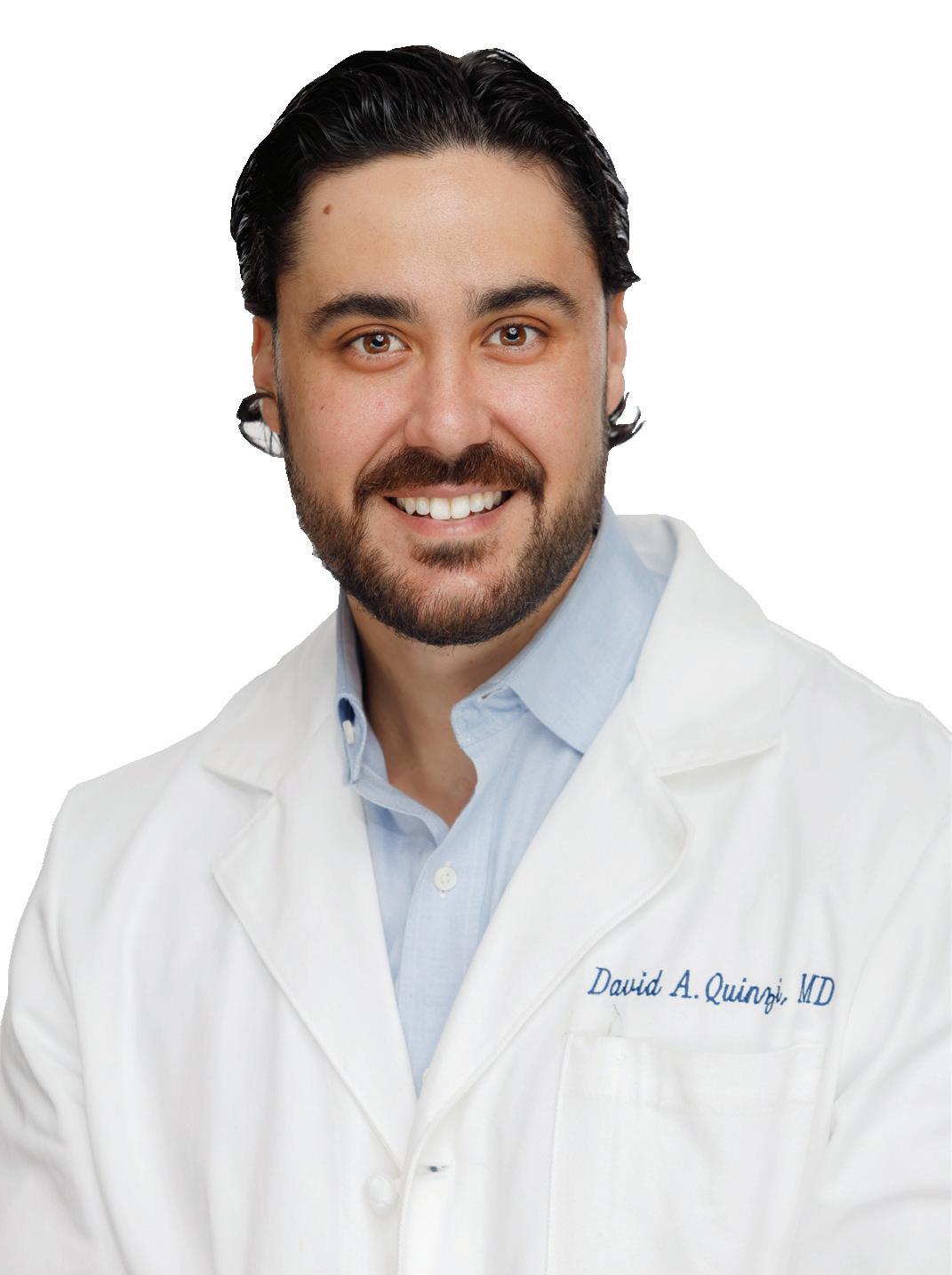
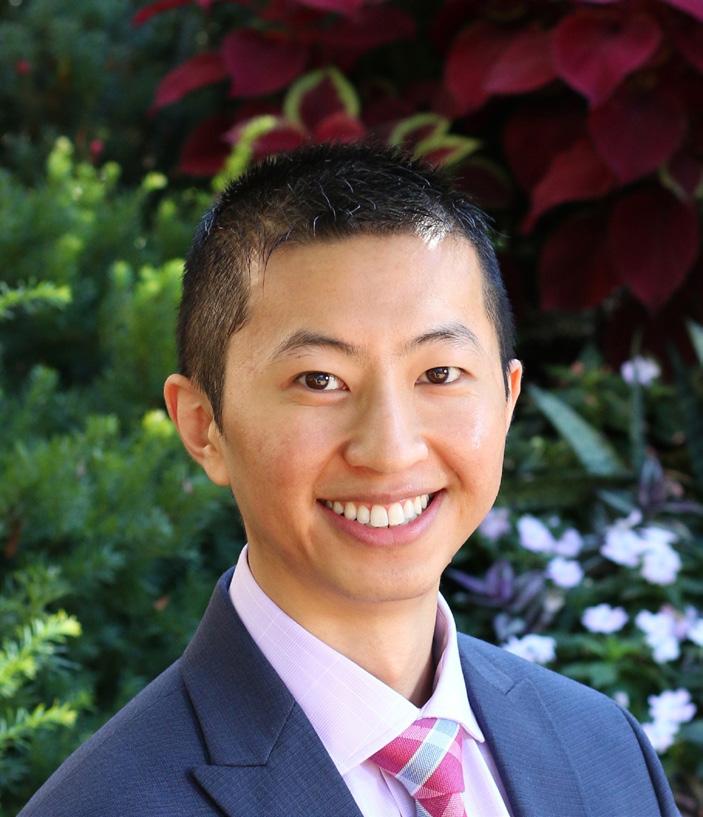
“For those with more chronic sleep disorders, I would encourage you to talk to your health provider about non-pharmacological interventions,” he stated. One non-pharmacological intervention, cognitive behavioral therapy, has been shown to be effective in improving sleep.
Promoting healthy sleep habits is also vital: Going to bed at the same time every night, not using a smartphone or watching TV when you’re trying to fall asleep. Consider a calmdown routine that helps you relax as you prepare to sleep. Sleep in a cool, dark room.
Also, caffeine can affect many; it can take up to eight hours for the effects to wear off. Alcohol may lead to poor quality sleep, as may eating large meals close to bedtime.
If you have sleeping issues, considering these approaches can make the difference in falling and staying asleep — and that’s good for the brain.
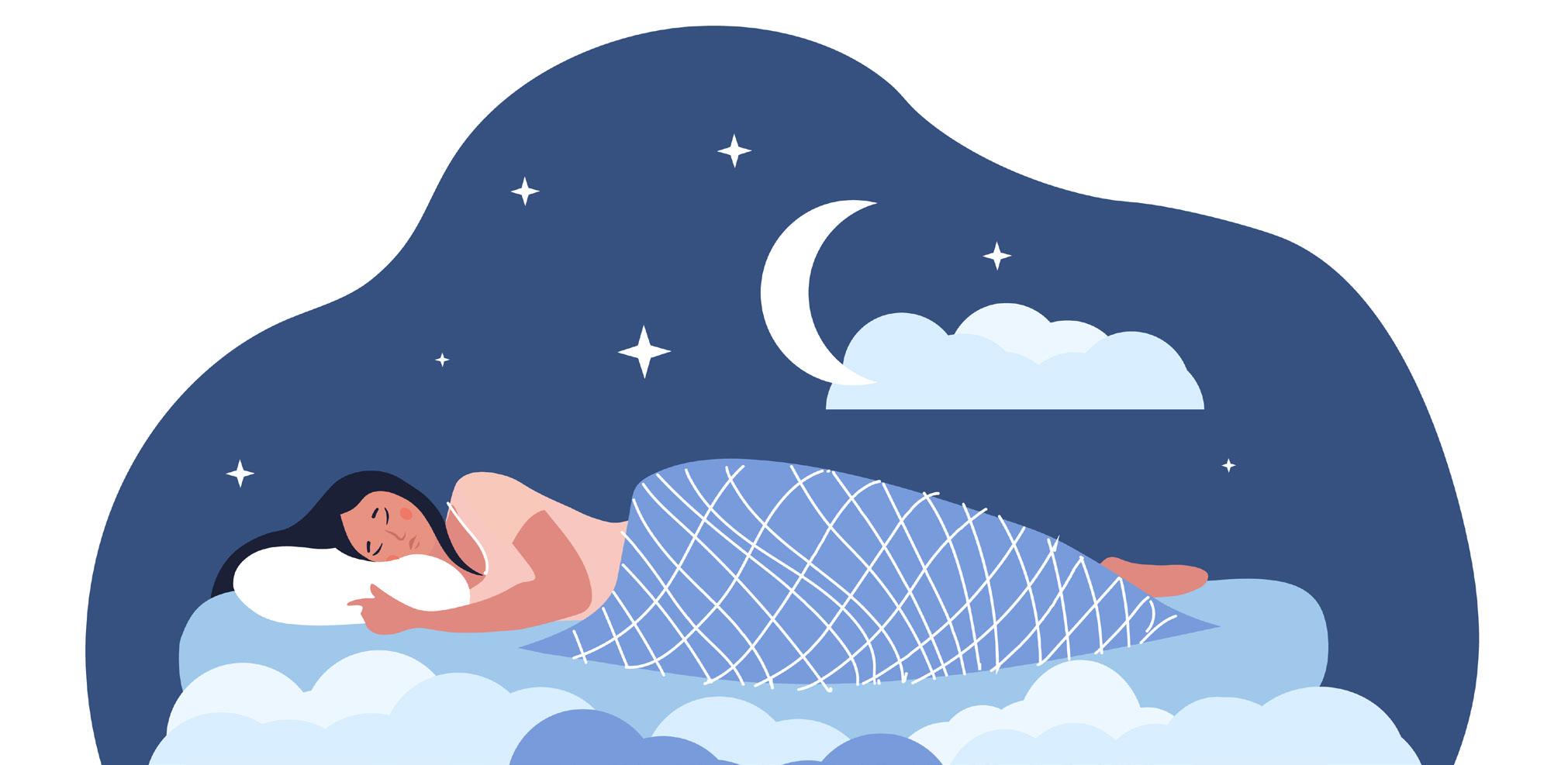
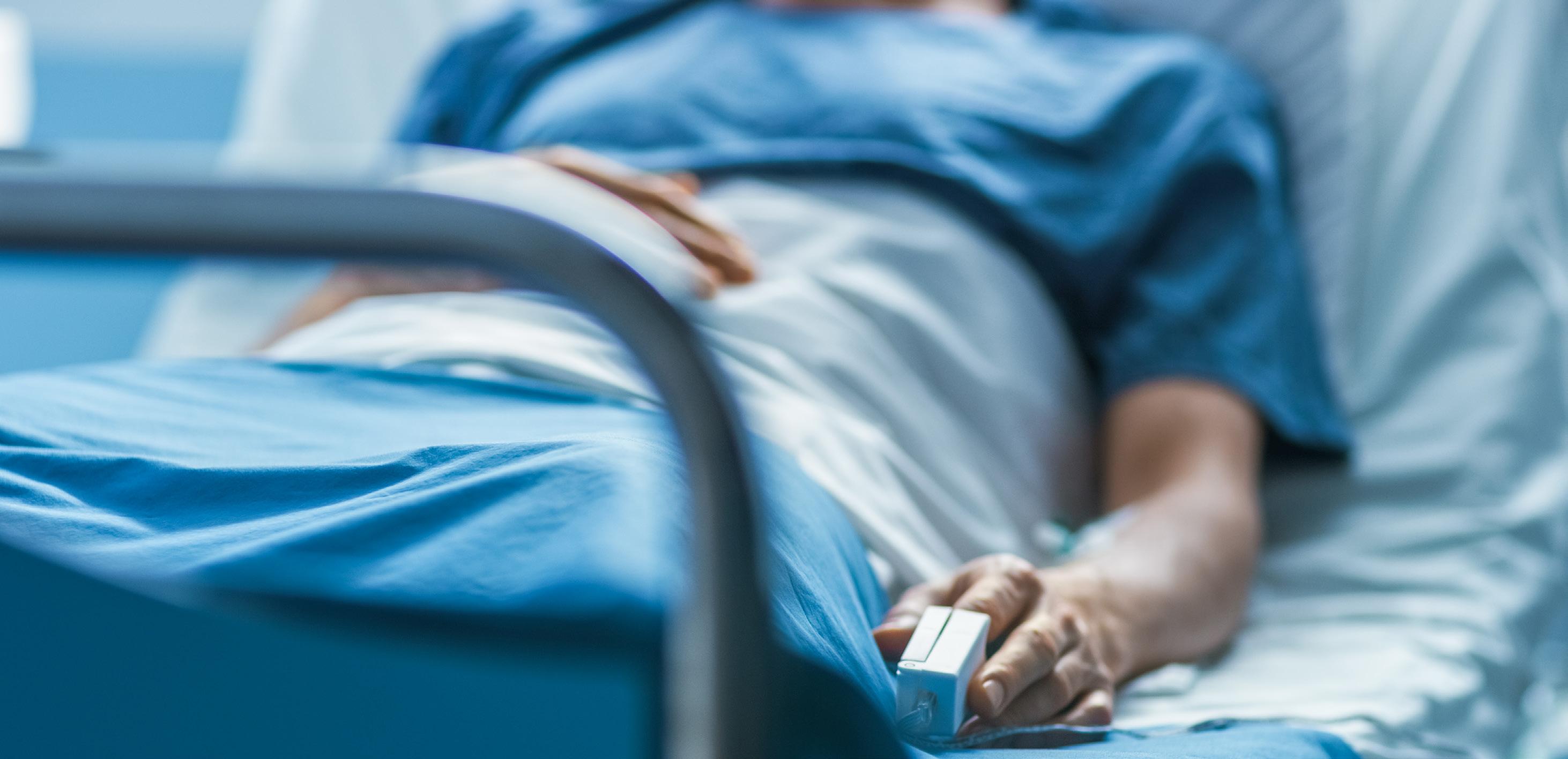
Medical professionals assisting patients in ending their lives sounds paradoxical. But groups such as Death With Dignity based in Portland, Ore. want to see New York join them as a state that permits lucid, terminally ill patients to request a dose of lethal medication to take when they deem it’s the right time to die. The proposed New York law, the Medical Aid in Dying Act (A995/ S2445), states that patients must have six months or fewer left to live and must be capable of requesting the medication both orally and in writing, as well as administering it themselves.
“Death with Dignity laws have been proven effective at improving healthcare quality at the end of life, regardless of whether or not an individual chooses to hasten their death,” the organization’s website states. “People travel from all over the world to access New York’s doctors and hospitals. New Yorkers shouldn’t have to leave the state to receive the care they need at the end of life.”
Amy Paulin, 88th New York State Assembly District and chair on the Assembly Committee on Health, introduced the bill on Jan. 12, 2023. She believes that the bill “provides dignity in death and throughout one’s life,” she said. “It allows someone to make a choice when they know they’re going to die anyway to determine how that death would be carried out. It helps alleviate pain.”
Terminal patients can receive hospice services when their physician has determined they have six months or less to live. They can linger in hospice for months and die without loved ones nearby, a scenario for which Paulin feels a personal connection. Her sister received treatment for cancer, including surgery, but the cancer eventually metastasized. Her doctor said she had two weeks to live.
“She could either be up, aware and able to talk and in pain or take such sufficient morphine that she’d be comatose,” Paulin said. “She altered between the two. She had no
By Deborah Jeanne Sergeantability to determine when the death would come, yet wanted friends and family around when it did. She died during Mother’s Day with her daughter there, but not the rest of us.”
Paulin said this caused much distress for her sister, whom Paulin said repeatedly screamed, “When am I going to die?” during her last days.
“She would have had all of us there if she had this medicine,” Paulin said.
Although unsure if her sister would have taken the medication, Paulin feels certain that it could have eased her sister’s anxiety about death, “which is worth a lot when you see a loved one dying,” Paulin said.
In Paulin’s legislation, medical assistance in dying (MAID), patients must receive a mental health examination to determine if they can make the decision and sign an affidavit, witnessed by a non-relative. They would have to be capable of self-administering the medication.
“We’ve seen examples in other states that very few people take that step,” Paulin said.
“However, many avail themselves of the possibility of taking that step. When you’re dying—and cancer is what we’re mostly talking about—you lose control. This allows you to get some of that control back. People don’t want to die. People who avail themselves of this medication don’t want to die. They choose life. It’s just that cancer and disease is saying something else. That’s why most people never use the medication even after they get the prescription. If they’re in such extensive pain and they know death is imminent, they can take the control back. That’s very valuable.”
Diagnoses such as ALS and dementia are not included as the medication must be self-administered by a lucid person. Slow-acting diseases restrict movement or affect the mind would not be included.
For now, Paulin is working on persuading her colleagues and hopes
to push full force for the bill when back in session in January.
Samuel Gorovitz, Ph.D. has served by gubernatorial appointment on the New York State Task Force on Life and the Law since 1988. He is a professor with SU’s Philosophy Department. He thinks the bill has a good chance of passing.
“A lot of people would choose to never end their own lives but don’t believe that other people should be denied that option under the sort of circumstances,” he said.
He described in the bill in New York as “very carefully crafted,” such as its provisions that no healthcare provider is obligated to participate and that it’s only allowable if all conditions have been met.
The concept of physicians “doing no harm” such as outlined in the Hippocratic Oath seems to contradict the idea of helping patients die.
“It’s not at all clear that a patient is harmed by being allowed to end a life which is more negative than positive,” Gorovitz said. “Indeed, many would argue that forcing someone to stay alive under some circumstances is perpetuating harm. Allowing people under specific circumstances to ending a life they wish to do so is not violating the ‘do no harm.’ It’s in the view of many people honoring it.”
He believes that many people want medical aid in dying (MAID) and that many people favor reproductive freedom.
“It’s a small minority of people who oppose making this available,” Gorovitz said.
He does not view MAID as a proverbial “slippery slope” into euthanasia.
“The empirical evidence relates that this is simply not true,” he said. “In fact, many people who have secured the right to end their own lives as they see fit, having secured it are greatly relieved by knowing they can do it as they choose, and then they don’t choose it. It empowers them with an affirmation of control in them rather than others.”
He believes that someone with
a terminal disease that could linger indefinitely should have MAID as an option rather than eliminating the family’s resources.
“We’d never want to see pressure on someone to accelerate the ending of life because someone else wants access to the money,” he said. “On the other hand, it does make sense I’d never want my own life prolonged thwarting my desire to leave a bequest to the philanthropies I support and my grandchildren.”
The only drawbacks he can find to Paulin’s legislation is that it’s not liberal enough, noting that someone who has experienced a stroke may be completely lucid, but unable to speak. That person would not qualify.
“It is a very cautious, carefully crafted and quite conservative and safe piece of legislation,” Gorovitz added.
Currently nine US states (California, Colorado, Hawaii, Maine, New Jersey, New Mexico, Oregon, Vermont and Washington) and Washington, DC have MAID laws and Montana does through court ruling.
In 2016, Canada’s medical assistance in dying criteria included only people with terminal illness. Five years later, it expanded to include incurable, but not terminal illness.
In March 2024, the law will also include people whose only condition is mental illness — one of the world’s broadest allowances for MAID.
“I don’t see this coming to the US,” said Geoff Sugerman, national political strategist for Death with Dignity in Oregon.
“There’s no desire for our organization to expand to mental health. There are many kinds of suffering; this is for physical suffering who are on hospice and are suffering.”
Doctoral student from University at Buffalo examines the geography of chronic pain and levels of education
If you live in West Virginia you're more likely to experience joint pain due to arthritis, according to a new study that looked at the differences in pain across states.
“The risk of joint pain is over three times higher in some states compared to others, with states in the
South, especially the lower Mississippi Valley and southern Appalachia, having particularly high prevalence of joint pain,” said first author Rui Huang, a doctoral student in sociology at the University at Buffalo.
“We also observed educational disparities in joint pain in all states
that vary substantially in magnitude, even after adjusting for demographic characteristics," she said in a university news release.
The study examined moderate or severe joint pain due to arthritis.
In all, 6.9% of Minnesotans had arthritis pain, the study found. That compared to 23.1% of West Virginians.
Researchers also noted that percentage point difference between people who did not complete high school versus those who obtained at least a bachelor's degree was much larger in certain states than in others.
In West Virginia it was 31.1 percentage points; Arkansas, 29.7; and Alabama, 28.3. That compared to 8.8 in California, 9.8 in Nevada and 10.1 in Utah.
“Education can function as a 'personal firewall' that protects more highly educated people from undesirable state-level contexts, while increasing the vulnerability of less educated individuals,” Huang said.
The study notes that states can have dramatically different policies affecting opportunities, resources and social relationships. These factors can influence individuals' pain.
“Very little research has examined the geography of chronic pain, and virtually none has examined the role of state-level policies in shaping pain prevalence,” co-author Hanna Grol-Prokopczyk, an associate professor of sociology at the University at Buffalo, said in the release. “We were excited to identify state characteristics that reduce residents' risk of pain.”
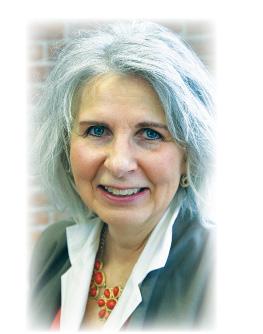
Researchers combined 2017 data
By Deborah DittnerLooking at heart health can be viewed in many ways.
Medically, your healthcare provider auscultates your heart, checking the rhythm, murmurs, skipped beats and more. Monitoring your blood pressure and other health issues is also important. You may have tests including blood work, an electrocardiogram, possibly an ultrasound or even a stress test to aid in determining your heart health.
Personally, taking care of your heart requires monitoring numerous daily habits including your whole nutrient dense food choices, hydration, proper sleep, physical movement, self-care, stress management and more. These daily actions are the most important of steps you can take to acquire heart health.
Chakra, which means “wheel” and refers to energy points in your body, consists of seven major chakras representing seven levels of consciousness. Opening your chakras through meditation, affirmations, movement (yoga), and breathing techniques creates balance within your body.
The heart chakra, also called
“Anahata,” is the bridge between the upper chakras and the lower chakras. The color associated with the heart chakra is green and is located at the center of the chest, just above the heart. It is symbolized as a green lotus with 12 petals.
The characteristics associated with the heart chakra are empathy, compassion, relationships at home, at work and with those that you meet on the street, love, insights, healing, forgiveness, inner peace and acceptance. An imbalance of the heart chakra is portrayed as defensive, jealous, having a fear of intimacy, codependency, victimization and excessive isolation. The heart chakra develops between the ages of 21-28 when many are exploring romantic relationships, sometimes causing heartbreak. It is of most importance to develop deep self-love and opening of one’s heart.
As you can see, an open heart allows you to give and receive love creating emotions on all levels.
Physical movement through a yoga practice encourages the flow of energy including poses such as cobra and camel.
• Cobra pose — Lying on your stomach with hands underneath your shoulders and elbows pulled in toward the body. Elbows remain bent while pressing feet, legs and hips into the mat. Lift your chest as you inhale while softening your shoulders down and back opening up the chest. Exhale as you slowly lower yourself down to the mat once again.
• Camel pose — Place knees on the ground hip-width apart and toes curled under. With your hands on your lower back, engage your core; drop the head back while opening up the chest as in a slight back bend. Thighs and hips move forward while maintaining a comfortable position. The hands can also be dropped to reach the heels creating a deeper backbend.
These two yoga postures aid in opening the heart chakra increasing balance and overall health.
Essential oils may also be used when exploring the heart chakra helping to rebalance and encourage the flow of energy. Rose oil may soothe and relax you, bringing feelings of happiness. Ylang Ylang oil aids in reducing anxiety and provides a boost to your self-esteem. Pine oil aids in decreasing fatigue while encouraging you to move forward finding balance within the heart chakra. Jasmine oil helps to find a sense of calmness and balance within life.
Stones for the heart chakra may be held or worn during meditation, specifically rose quartz, the crystal of love helping to find compassion and intimacy and healing emotional
on nearly 408,000 adults aged 25 to 80 with state-level data about programs for SNAP food assistance, tax breaks for low- to moderate-income families, income inequality, community relationships, Medicaid generosity and tobacco taxes.
The study noted that some states offer more expansive SNAP benefits than others do. Those that did had populations with a lower prevalence of pain, as did those with stronger relationships among community members. This indicates that material resources and social function play a part in pain risk, according to the researchers.
“The increase in the generosity of SNAP benefits could potentially alleviate pain by promoting healthier eating habits and alleviating the life stress associated with food insecurity,” Huang said. “Social factors such as conflict, isolation and devaluation are also among the 'social threats' that can lead to physical reactions such as inflammation and immune system changes.”
About 59 million Americans have arthritis. At least 14 million experience severe joint pain, which can include diminished range of motion and disability.
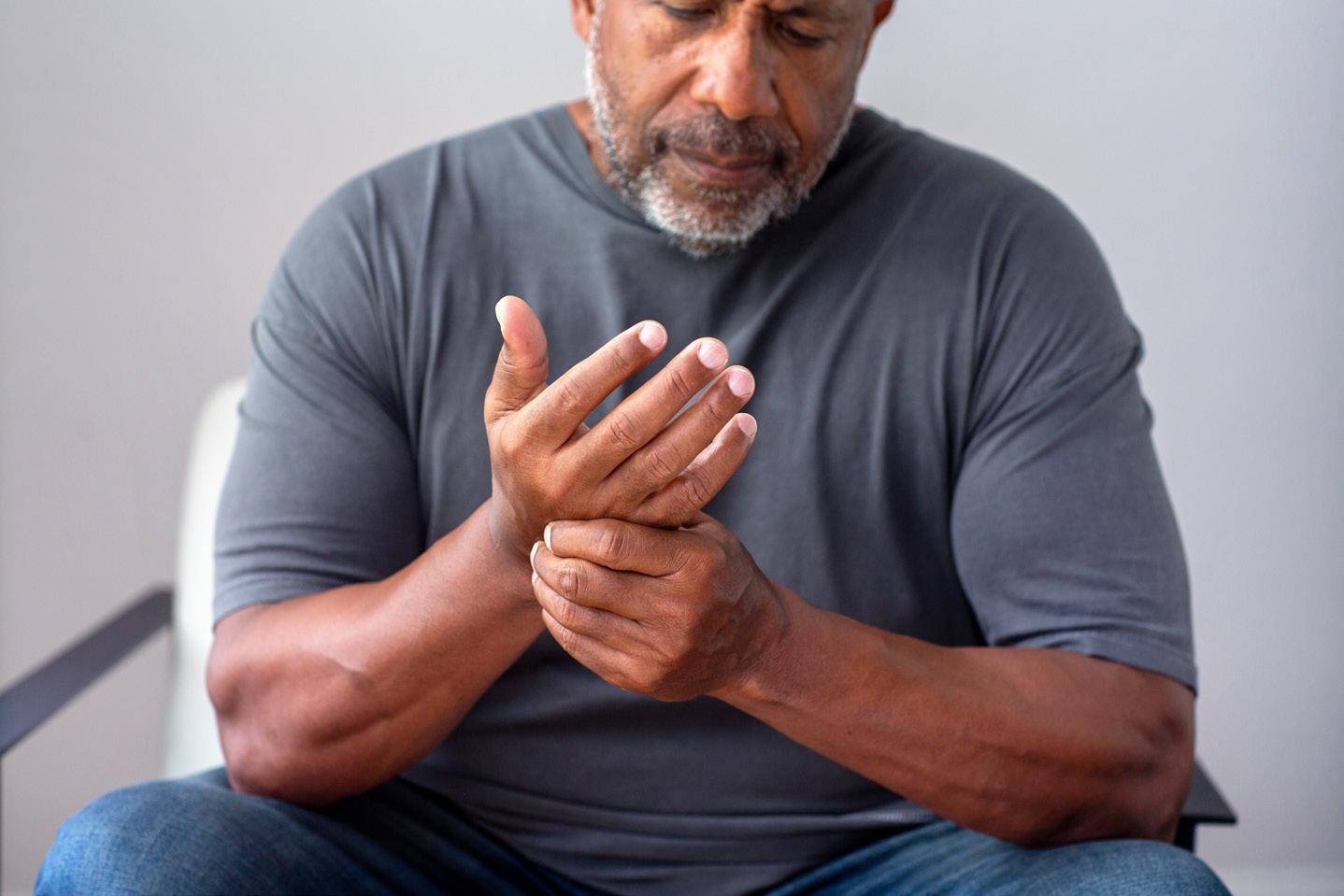
“Chronic pain can — and should — be addressed through macro-level policies, as well as through individual-level interventions,” Huang said. “This study also implies that pain research in general should move towards a greater understanding of the macro contextual factors that shape pain and pain inequalities.”
The findings were recently published in the journal PAIN.
trauma. Green calcite aids in clearing the heart space creating calmness. The emerald helps to create balance and harmony and to trust in our own heart. Malachite provides strength and power and is known as the transformative stone. There are many other stones associated with the heart chakra when you are ready to dig deeper into your journey.
Heart chakra affirmations or mantras may be spoken during meditation. Repeating these statements throughout the day can be powerful, allowing more love and compassion into your life. Create your own affirmation or start with these suggestions by saying “I live in harmony with all other beings and I release and let go of all resentment” or “I am safe and open to giving and receiving love” or “I am love. I am cherished. I am worthy.”
As you can see, heart health can come in many ways. Taking care of your heart physically, mentally and emotionally will help ensure safe passage through life and its many challenges.
Deborah Dittner is a family nurse practitioner and health consultant. Her mission is to transform as many individuals as possible through nutrition and lifestyle changes. www. debdittner.com
The rate of suicides and suicidal thoughts among teens and young adults has increased from 2020 to 2021, according to the Centers for Disease Control.
Suicide was the third leading cause of death for young people (aged 10-24) in New York state in 2020, according to the American Foundation for Suicide Prevention.
More and more people are taking their own lives.
Their suicides have had a deep painful impact on their friends, family members and loved ones. Many surviving family members feel guilty and depressed after losing their loved one to suicide, according to emedicinehealth.com. They are ashamed of themselves and traumatized by the event. They have a hard time moving forward in life.
Those who have lost a loved one to suicide and feel guilty or depressed after their loss, should contact the American Foundation for Suicide Prevention. The organization’s mission, according to Karen Heisig, AFSP’s Greater Central New York area director, is to save lives and bring hope to those affected by suicide. The organization has provided programs, resources, help and support to those who have lost a friend or family member to suicide or are thinking about suicide.
“The American Foundation for Suicide Prevention is the leading nonprofit funder of suicide prevention research in the United States,” Heisig said. “We do programs. We support those at risk. We support those who have lost someone [to suicide]. We offer support and resources to anybody who’s been impacted by suicide and then we do loss and healing. Loss and healing entails supporting those who have lost a loved one. Whether that’s connecting them to a peer, providing written and digital
resources, like a list of books they might find helpful, a list of support groups and finding a therapist who has experience talking about suicide loss.”
Bear, Delaware, resident Angela Biamonte-Bowers reached out to AFSP after losing her son, Ryan, to suicide.
“I absolutely did,” she said. “Weekly calls, weekly check-ins, and brief support groups. We fundraised, and they [AFSP] came and showed their support at the fundraiser and talked about suicide. I can’t stress enough to love and support this foundation.”
She also turned to her friends for help.
“The support of family and friends is the only thing that has gotten us through this,” Biamonte-Bowers said. “We had a great group of friends that have taken us in, treat us as family and our friends alone have helped us to survive every second of every day.”
Heisig lost her husband, Maurice Heisig, to suicide.
“My husband died by suicide in January of 2006 after a long struggle with depression, post-traumatic stress and the loss of his brother to suicide and his dad due to chronic illness.” Heisig said. “He had many risk factors — health, historical and environmental risk factors.”
Life was rough for Heisig after the loss. But she emotionally healed after reaching out to AFSP and volunteering at it Out of the Darkness Walk (an AFSP fundraiser).
“It [moving on] was really difficult,” Heisig said. “I lived in North Carolina far from family, so really where my healing started was when I connected with other people who
have lost someone. When I moved home to New York, I met other people from the American Foundation for Suicide Prevention. I got involved in my local community (AFSP) walk in Rochester. I started volunteering there and that gave me a sense of purpose. It (AFSP walk) helped me give meaning to everything that happened and that’s still what carries me on years later.”
Heisig sees suicide as a more complex health issue.
She learned more about it and discovered the reasons why people do it. The discoveries were what influenced Heisig to become a member of AFSP.
“We lost my husband’s brother in 1999,” Heisig said, “Nobody was talking about suicide at that time. So none of us were learning anything about it. It was just swept under the carpet. Then when we lost my husband, it was like ‘oh my gosh. We need to talk about this.’ Thankfully, as the years have gone on, people have started talking about this more and more. That really helped me because the more I learned about it, the more I realized, ‘OK this is a complex health issue.’ There’s a lot going on when somebody dies by suicide and the more you know about risk factors and warning signs, the more likely they are to be able to help somebody. So that had a big influence on me doing this work, volunteering, and joining the (AFSP) staff.”
AFSP is not the only organization reaching out and helping those affected by suicide.
Surviving family members are also trying to help.
Ilion resident Carmen Newtown lost his son, Christopher, to suicide. Newtown said that he had a hard time moving on after the loss. He is now trying to reach out to other families and warn them about suicide, so that they do not go through the same emotional pain that he did.
“It’s certainly not easy (moving on),” Newtown said. “But if we can prevent one other family from going through what we went through, whether it would be education, that’s our key. We’re trying to educate youth and adults alike that there’s another way. What seems like the end for them is probably a bump on
the road. Our goal is to spread the word and educate people to prevent one other family from going through this.”
Dolgeville resident Tracy Stewart lost her daughter, Meagan, to suicide last March. Stewart is also trying to raise suicide awareness and help other families who lost their loved ones to suicide. She started the “Miles for Meag” program in memory of her daughter.
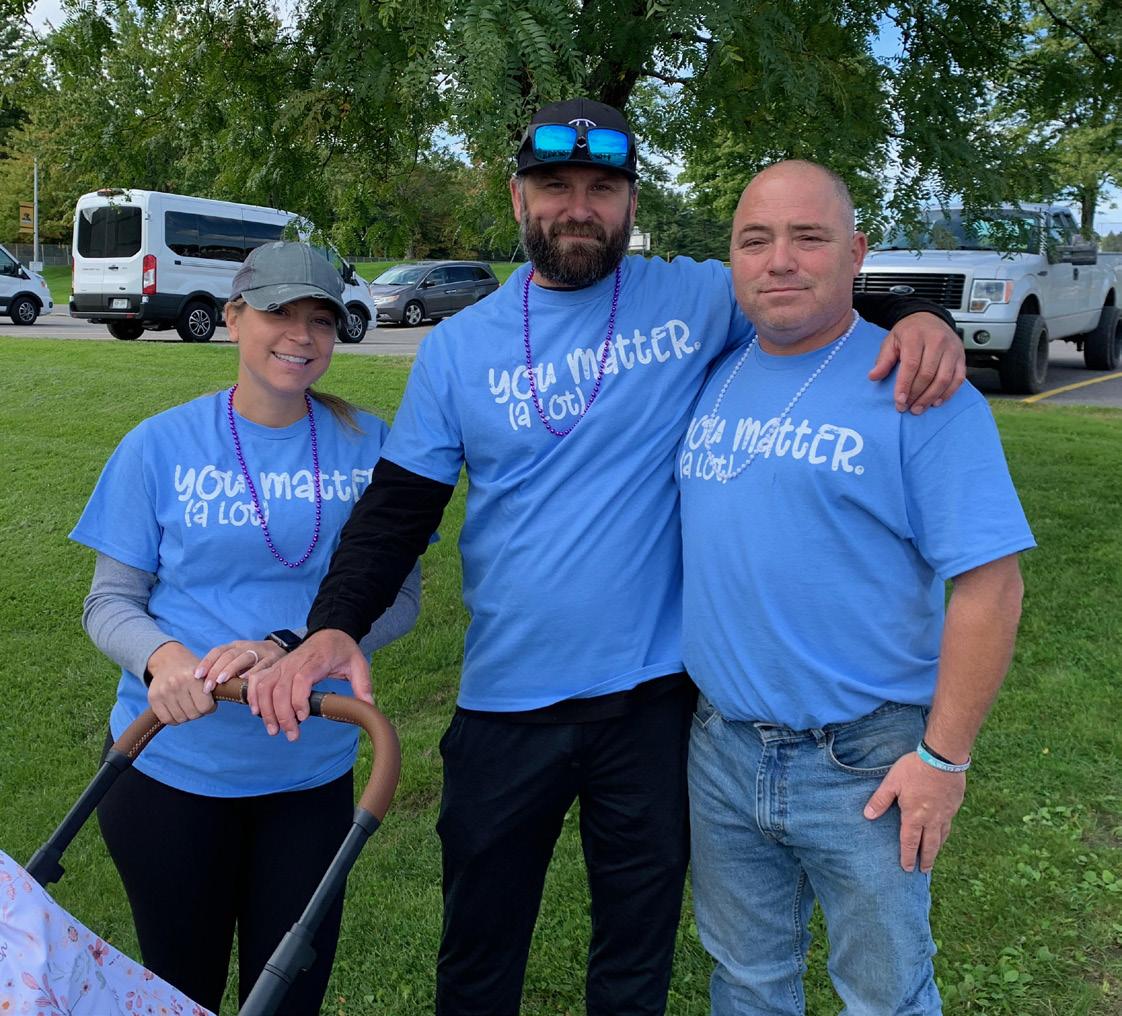
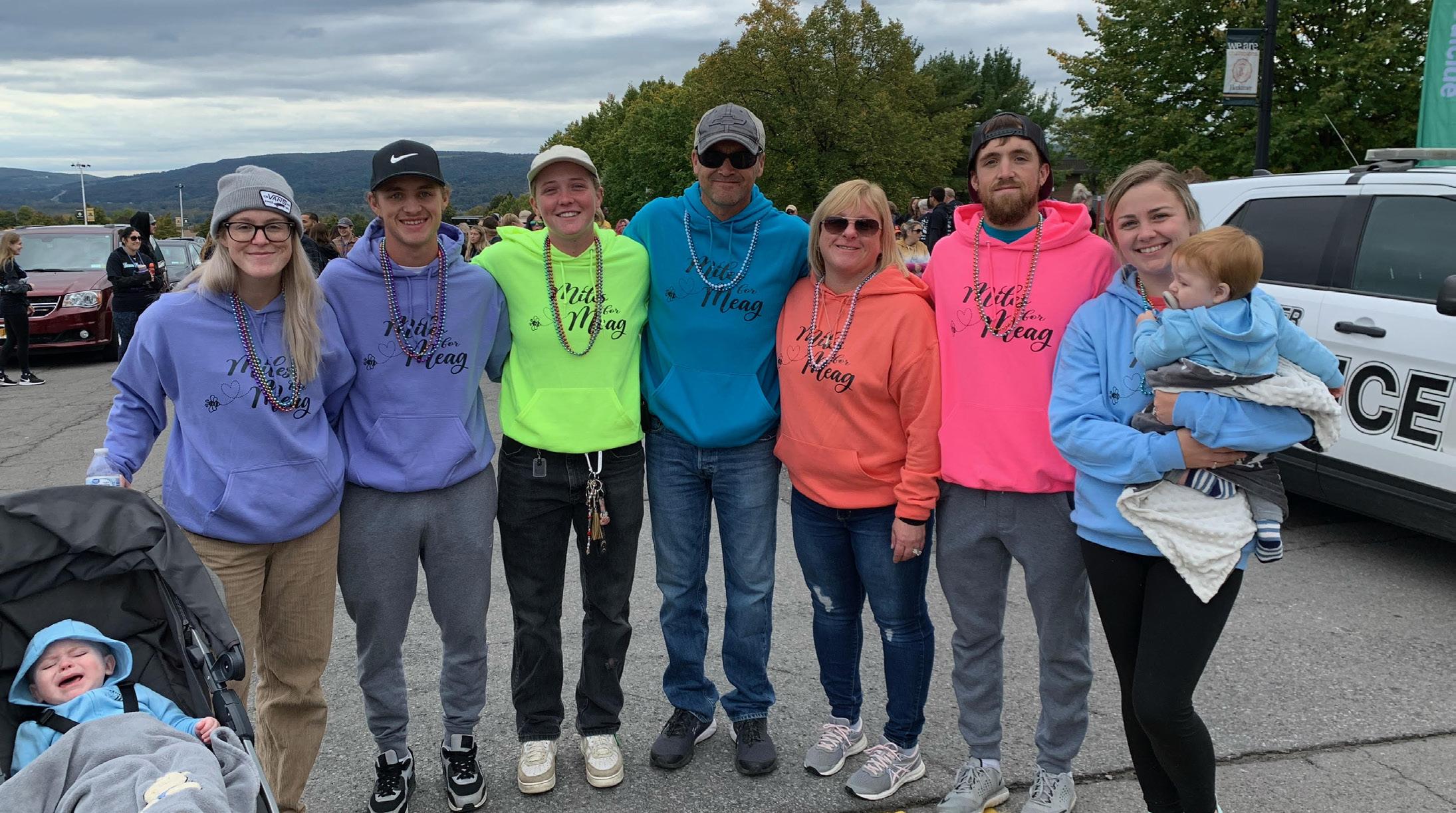
“It is a nonprofit organization,” Stewart said. “We started a ‘Miles for Meag’ organization to help others and support families (who lost their loved ones to suicide). We’re working on suicide prevention as well as support services for families if a suicide happened. Our ultimate goal is to get a house for families to go to if suicide happened in their home.”
This non-profit organization is still up and running today.
Suicide may be a complex health issue, but it can be prevented. Those who are in suicidal crisis or are thinking about ending their lives should immediately call the Suicide and Crisis Lifeline at 988 or the National Suicide Prevention Lifeline at 1-800273-TALK (8255).
“I would say to that person, ‘please keep going,’” Heisig said. “Please reach out for help and if you reached out before and it didn’t go so well, reach out again or reach out to someone else. There are times in our lives where things become overwhelming and we all need a little assistance. Talking about the way we’re thinking and feeling can be positive steps towards getting out mental health back on track.”
If you or someone you know are thinking about suicide, call one of these organizations:
• Suicide and Crisis Lifeline at 988
• National Suicide Prevention Lifeline at 1-800-273-TALK (8255).
• American Foundation for Suicide Prevention: 1-888-3332377.
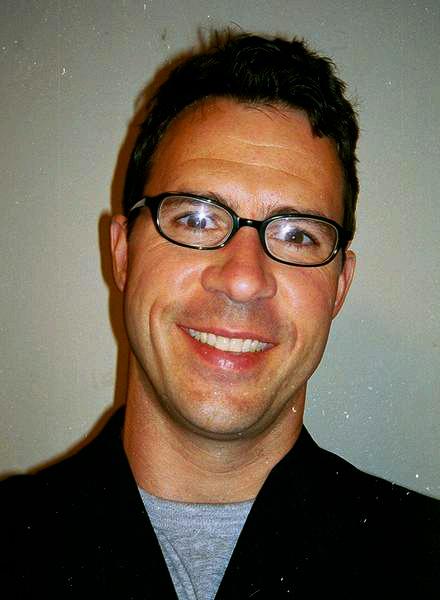
What can you tell me about green funeral options? At age 80, I would like to preplan my funeral and make it as natural as possible.
Old EnvironmentalistGreat question! Green funeral options are becoming increasingly popular in the United States as more and more Americans are looking for environmentally friendly alternatives to traditional funerals. Here’s what you should know about “green burial” and “green cremation” options, along with some tips to help you locate services in your area.
If you wish to be buried, a green–natural burial will minimize the environmental impact by forgoing the embalming chemicals (which is not required by law), traditional casket and concrete vault. Instead, you’ll be buried in either a biodegradable container or shroud with no vault, and you won’t be embalmed. This allows the body to decompose naturally and become part of the earth.
If you want to temporarily preserve the body for viewing or a memorial service, instead of embalming, you can request dry ice or Techni ice, a refrigeration unit, or a nontoxic embalming agent.
You’ll also be happy to know that green burials are much cheaper than traditional funerals, which average around $8,000 in 2023. By scrapping the coffin, vault and embalming, which are expensive, you’ll save yourself several thousand dollars on your funeral costs.
To find green burial services in your area, a good first step is to see if there’s a certified green funeral home in your area and contact them. The Green Burial Council offers an online directory of providers and other resources at GreenBurialCouncil.org.
If there isn’t one nearby, your next step is to contact several traditional funeral homes to see if they offer green funeral service options — many do.

You’ll also need to find a green cemetery. There are nearly 100 green cemeteries throughout the U.S., along with more than 300 traditional (hybrid) cemeteries that offer green burials too. To find them, the New Hampshire Funeral Resources, Education and Advocacy website has a list at NHfuneral.org. Or, if you own rural property you may be able to have a home burial there, if your state and county allow it.
If, however, there are no green cemeteries nearby you can still make

Open mid-September • Walk-ins welcome
555 French Rd., Building 2 in New Hartford
Open Mondays through Fridays, 7:30 a.m. to 4 p.m.
Prompt, courteous and no appointment needed. Learn more at laboratoryalliance.com

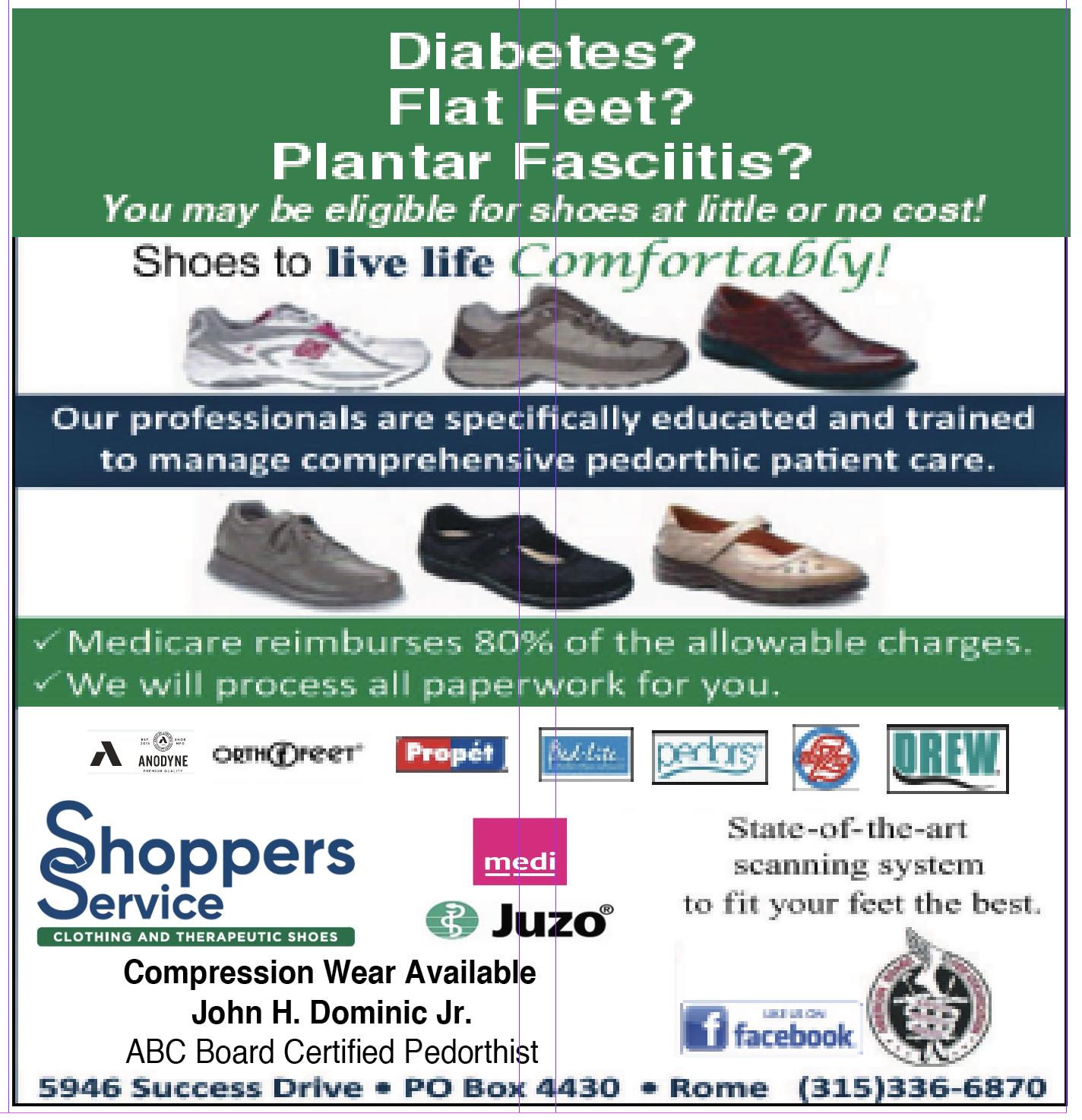
your burial more environmentally friendly by not being embalmed. And, if the cemetery allows, using a biodegradable casket or shroud and skipping the vault. If a vault is required, ask to have holes drilled in the bottom, or use a concrete grave box with an open bottom so the body can return to the earth.
If you would rather be cremated, you have some green choices here too. While cremation has always been touted as being more eco-friendly than a typical burial, a traditional cremation, which uses high heat to incinerate the body, does emit greenhouse gases into the air.
A green cremation, however, uses water and potassium hydroxide to reduce a deceased body to its basic element of bone ash within a few hours. This green technique, which is known as alkaline hydrolysis, is a little more expensive than traditional cremation but, unfortunately, it’s not legal in every state. Contact some local funeral providers to find out if this is available in your area, or Google “alkaline hydrolysis cremation” followed by your city and state.
Another green consideration is deciding what to do with the remains. Instead of scattering, which can be harmful to the environment, there are a wide variety of biodegradable urns that dissolve into the earth or water over time, and memorial urns that will grow a plant or tree in combination with your ashes.
We continue to make it easier for you to access our programs and benefits. Our website offers a convenient way to apply for benefits online.
Here are five ways you can apply for benefits using ssa.gov.
1. Retirement or Spouse's Benefits
— You must be at least 61 years and 9 months and want your benefits to start in no more than four months. Apply at www.ssa.gov/retirement.
2. Disability Benefits — You can use our online application, available at www.ssa.gov/benefits/disability to apply for disability benefits if you:
• Are age 18 or older.
• Are not currently receiving benefits on your own Social Security record.
• Are unable to work because of a medical condition that is expected to last at least 12 months or result in death.
• Have not been denied disability benefits in the last 60 days. If your
application was recently denied, our online appeal application is a starting point to request a review of the determination we made. Please visit www.ssa.gov/apply/appeal-decision-we-made.
3. Supplemental Security Income (SSI) — SSI provides monthly payments to adults and children with a disability or blindness who have income and resources below specific financial limits. SSI payments are also made to people aged 65 and older without disabilities who meet the financial qualifications. If you meet certain requirements, you may begin the process online by letting us know you would like to apply for SSI at www.ssa.gov/ssi. If you do not have access to the internet, you can call your local Social Security office to make an appointment to apply.
4. Medicare — Medicare is a federal health insurance program for:
• People aged 65 or older.
• Some people younger than 65
The center also o ers convenience for patients in Madison and Oneida counties. For patients already being seen at the Upstate Cancer Center in Oneida, the new center is just 15 minutes away.
Join us for our public Open House on Tuesday, September 26, from 10 AM – Noon, 5584 East Main Street in Verona, at the intersection of Routes 31 and 365, and easily accessible from the NYS Thruway (Exit 33).
who have disabilities.
• People with end-stage renal disease or amyotrophic lateral sclerosis (ALS).
• If you are not already receiving Social Security benefits, you should apply for Medicare 3 months before turning age 65 at www.ssa.gov/ medicare.
5. Extra Help with Medicare
Q: I lost my Medicare card. How can I get replacement?
A: The easiest and newest way to get a replacement Medicare card is by using your My Social Security account. Go to www.ssa.gov/myaccount for more information on how to create an account. You also can get a replacement Medicare card by calling us toll-free at 1-800-772-1213 (TTY 1-800-325-0778). Keep your card in a safe place. You don’t want anyone getting hold of your Social Security number. They could steal your identity.
Q: I pay my monthly premium directly to my Medicare prescription drug plan provider. Why can’t I also pay my income-related monthly adjustment amount directly to my Medicare prescription drug plan provider?
A: By law, we must deduct your income-related monthly adjustment amount from your Social Security payments. If the amount you owe is more than the amount of your payment, or you don't get monthly payments, you will get a separate bill from another federal agency, such as
Prescription Drug Costs — The Extra Help program helps with the cost of your prescription drugs, like deductibles and copays. People who need assistance with the cost of medications can apply for Extra Help at www.ssa.gov/medicare/part-dextra-help.
Please share this information with those who need it.
the Centers for Medicare & Medicaid Services or the Railroad Retirement Board. Read Medicare Premiums: Rules for Higher-Income Beneficiaries for an idea of what you can expect to pay at www.ssa.gov/pubs.
Q: I'm retiring early, at age 62, and I receive investment income from a rental property I own. Does investment income count as earnings?
A: No. We count only the wages you earn from a job or your net profit if you're self-employed. Non-work income such as annuities, investment income, interest, capital gains, and other government benefits are not counted and will not affect your Social Security benefits. Most pensions will not affect your benefits. However, your benefit may be affected by government pensions earned through work on which you did not pay Social Security tax. You can retire online at www.ssa.gov. For more information, call us toll-free at 1-800772-1213 (TTY 1-800-325-0778).
Lifetime Benefit Solutions
(LBS), the Upstate New York-based third-party administrator with offices in Syracuse, Rochester and Buffalo, is increasing its presence in Virginia, North Carolina, South Carolina, and Tennessee with its purchase of a book of business from Virginia-based Towne Benefits. LBS acquired nearly 1,000 clients to provide COBRA, reimbursement accounts, and LBS’ full suite of ancillary benefits and specialty programs that help round
out an employer’s traditional benefits.
“Lifetime Benefit Solutions is strong, and growing,” says LBS President Trish Mooney.

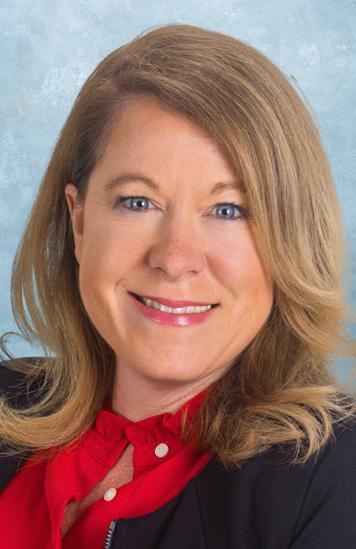
Towne Benefits provides a full range of benefits services to its clients, including employee benefits administration, online enrollment technology, human resources consulting, compliance administration, individual insurance coverage and ACA enrollment, Medicare products, long-term care planning, and more.
LBS is among the nation’s top echelon of third-party administrators and an industry leader in designing, developing, and deploying reimbursement accounts, COBRA, retirement accounts, and other employee wellness-related plans that promote employee health while safeguarding a company’s financial health.
To learn more about LBS, visit www.LifetimeBenefitSolutions.com.


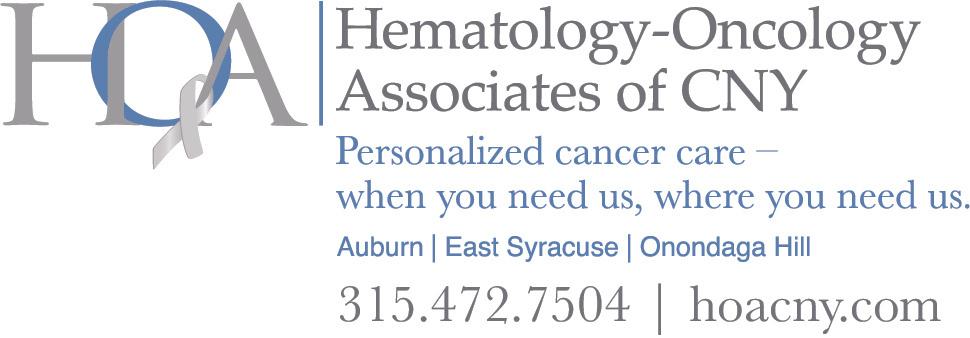
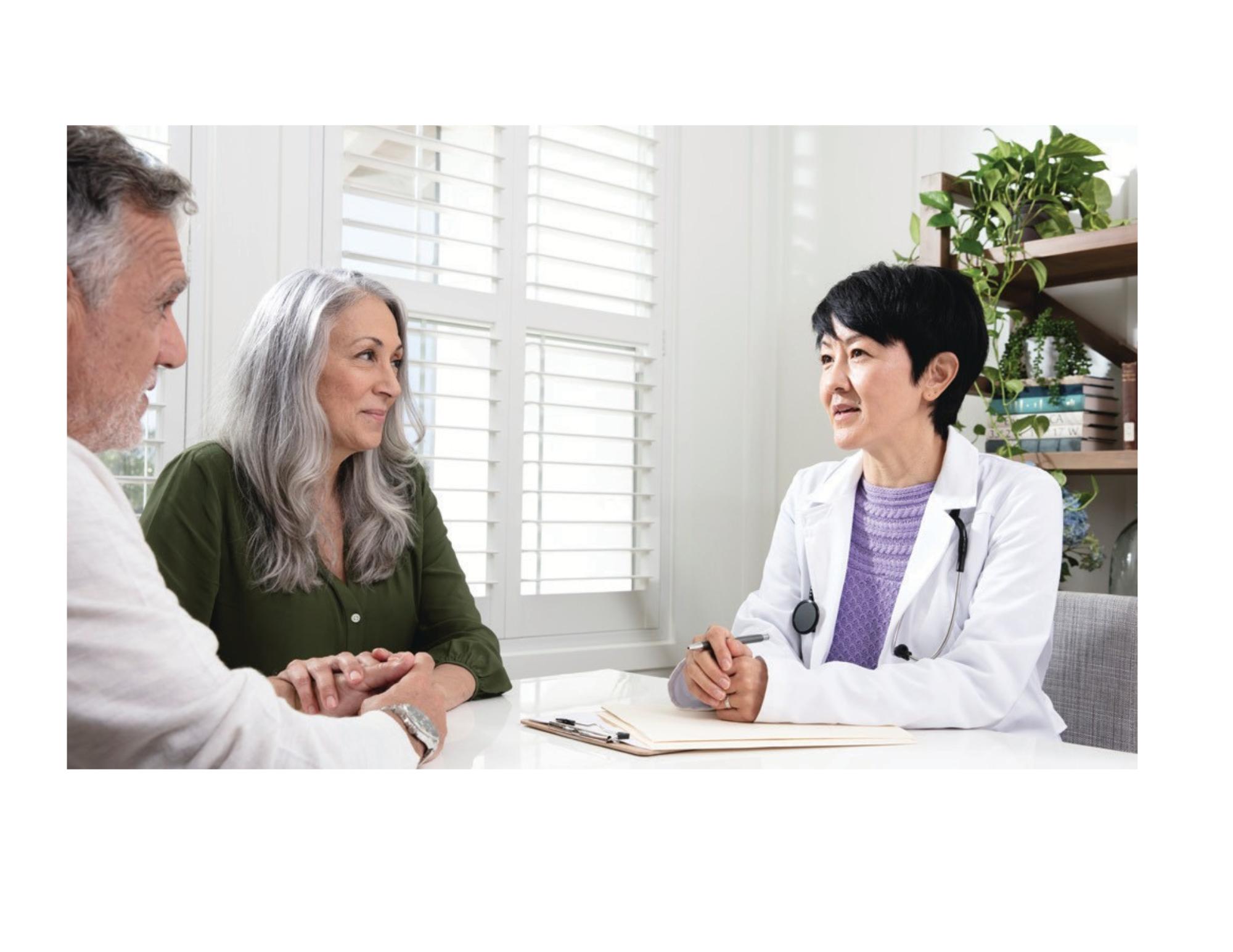

“Being in nature makes me happy!” said Amanda Shanahan of Syracuse, manager of Employee Wellbeing at Excellus BlueCross BlueShield.
“It puts my life into perspective, reminding me that I’m part of something much bigger. It lets me connect with this beautiful land we live in, while I disconnect from day-to-day expectations and technology.”
For most of us, our connection to nature has become tenuous. We live in air-conditioned buildings cleaned with antibacterial spray. Our food is sprayed and wrapped in plastic. As Shanahan said, we’re involved with technology every day. We’re drawn to technology, not trees. Kids don’t play outside like we did when we were kids. Most don’t even walk to school.
Yes, nature is beautiful. It’s intriguing. It’s awesome when you stop and experience it. Not only that, it’s our life support system.
Being in nature has a measurable effect on our mental and physical health.
Shanahan identified some of the health benefits: Being in nature lowers our stress levels and our blood pressure. It improves the functioning of our brain. It enhances our mood. It makes us happy, as she said.
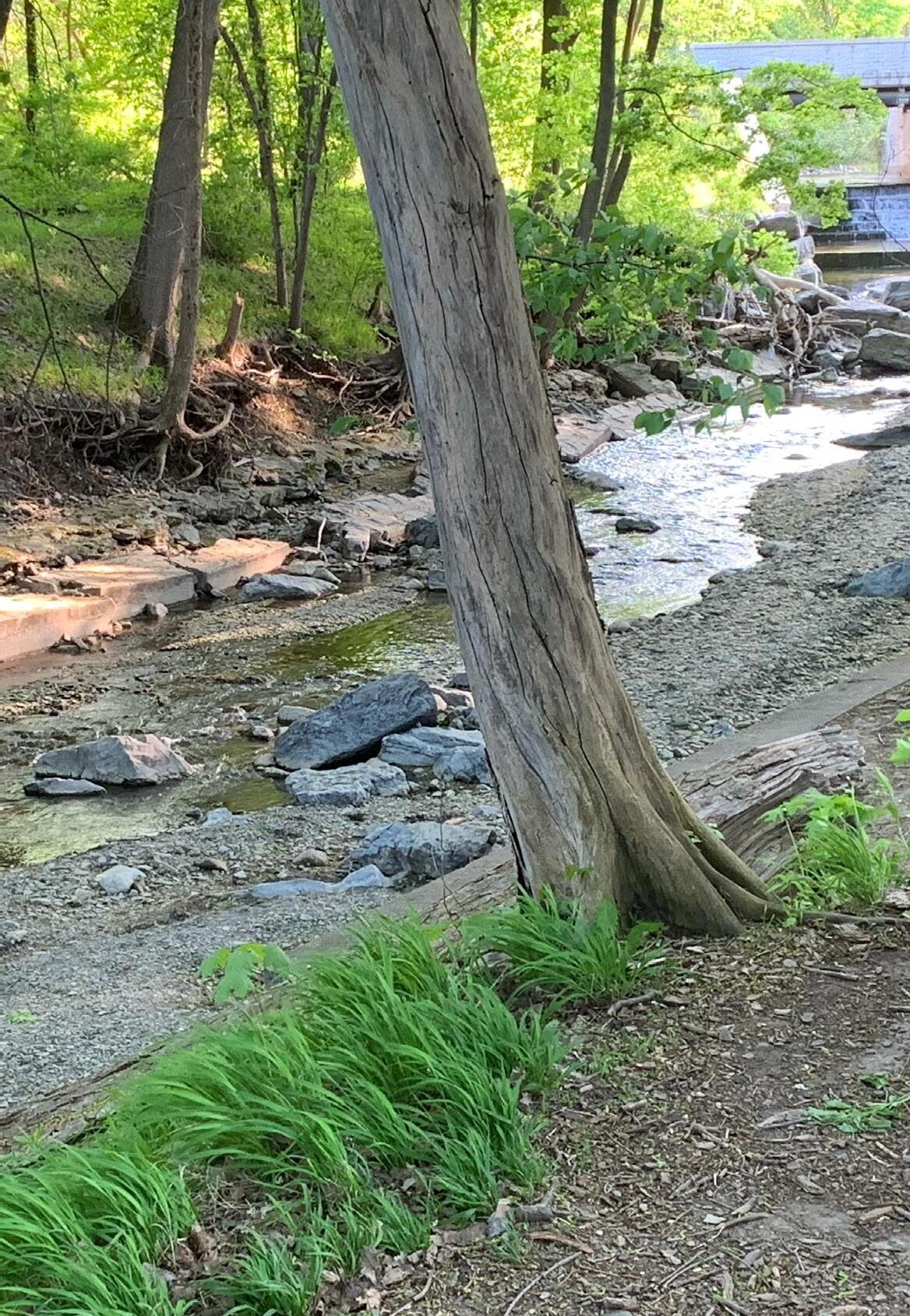

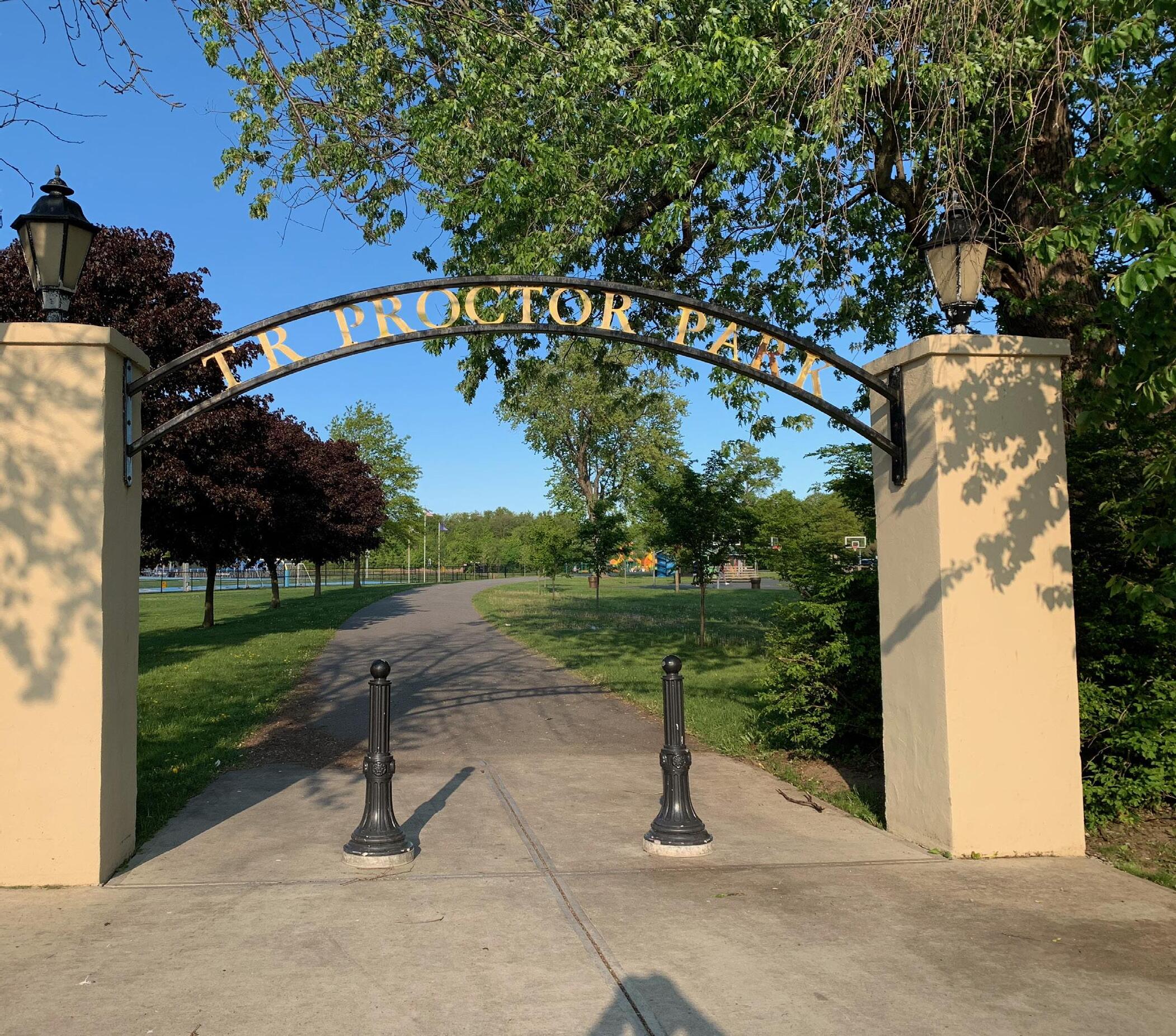
A significant amount of research points to the same conclusion. We stand to benefit tremendously from a strong connection with nature.
For example, one study showed that hospitalized patients in rooms
with windows that looked out on nature had shorter stays, made fewer negative comments and took fewer painkillers than patients whose windows faced a wall.
Another study found that people who lived in areas with a higher percentage of trees and green space had significantly lower stress levels than those living in urban areas.
Other research found that people who merely looked at images of natural scenes for a few minutes showed a marked reduction in activity of the brain responsible for processing emo-
tions, mainly fear and anxiety. The Amish live on traditional farms, using horses and plows and the children play in the barn spending time with the livestock as they did the 19th century. They have lower levels of chronic inflammation. In affluent developed countries, the rates of allergies, autoimmune disorders and irritable bowel disorder have increased.
There’s something about nature that soothes, relaxes and heals our entire being.
“The demands of everyday life often overtax our brain and body,” said Shanahan. “Time with nature is time to recharge, allowing us to better cope with life’s stresses. Our brains don’t have to work the same way to pay attention to nature, which allows time for restoration.”
Spending time in nature, looking at plants, water, birds and other aspects of nature gives the cognitive portion of our brain a break, allowing us to focus better and renew our ability to be patient.
Taking a walk in nature can help significantly boost your metabolism, protecting you from a range of health ailments including diabetics and obesity.
While the idea of spending time in nature is not new, reconnecting to nature as a healing practice first took root in Japan and was is called “forest bathing” or “taking in the forest atmosphere.”
As the hustle and bustle of daily life has continued to increase, forest
bathing has become a part of preventative healthcare in many countries around the world and, in the last several years, has quickly and quietly gained steam in the U.S.
Forest bathing is a slow walkthrough nature where you focus on taking in the environment with all your senses, noticing the smells, the tastes and the sounds. Watch the sunlight filter through the greenery, taste the freshness in the air, smell nature’s many fragrances, feel the texture of tree bark, rocks and earth, listen for the wildlife.
When was the last time you spent time in nature? If it’s been long, put this at the top of your list of things to do and make it a priority to spend time in nature, to rest and rejuvenate. It’ll definitely be worth every moment.
Shanahan’s favorite places to experience nature are the Fulton Chain of Lakes, Old Forge and Inlet (off Route 28).
And there’s Proctor Park in Utica, Lock 20 Canal Park in Marcy, Pixley Falls in Boonville. The Adirondacks with a state park and the Catskills with a state park.
What are your favorites? When will you revisit them? Or you could look for new favorites on the internet or poll your friends. The great outdoors is a natural stress reducer and always a healthy choice. You’re never wrong when you step outside, even for just a few minutes.
If you can’t get outside, even viewing green spaces from your window or watching a nature documentary will lower your stress levels.